Whether you have a small corner of your yard or an entire acre to redesign, Japanese gardens are the perfect way to create structure, nature and serenity in the outdoors.
Every element of a Japanese garden has its own meaning and aids in cultivating Zen.
The right garden can bring a sense of calm to your outdoor spaces and increase your home’s value, too.
Here are some Japanese garden ideas that will help you achieve a sense of peace and serenity in your own backyard.
1. The Mini Zen Haven
Small Japanese Garden Design
If you have a yard or even a balcony, you can construct a small Japanese garden and have your own oasis, no matter how built-up the surrounding area.
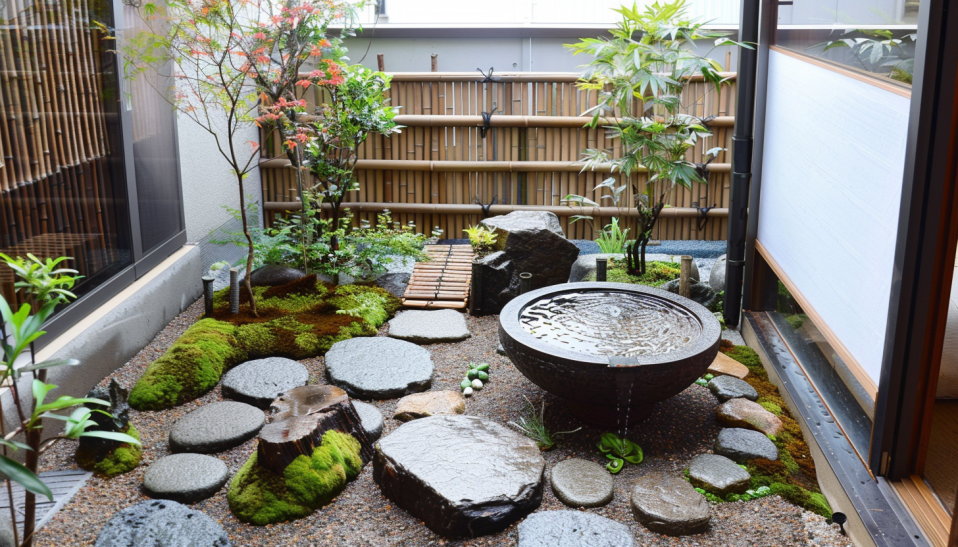
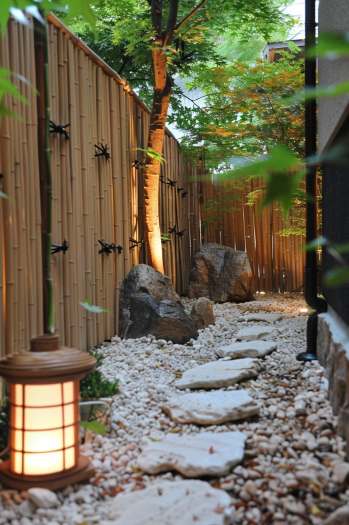
Making use of Stones: Make use of different sizes of stones to construct the pathways or make waterfalls and rivers.
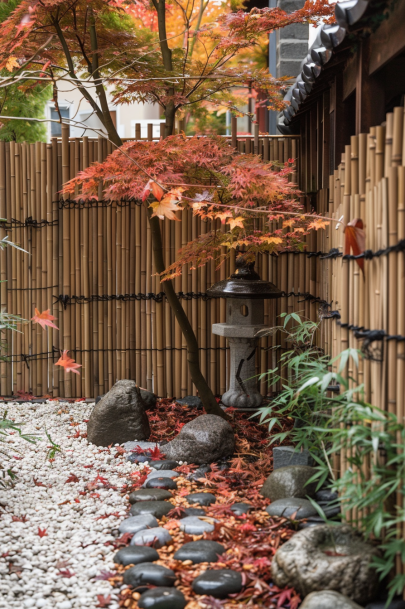
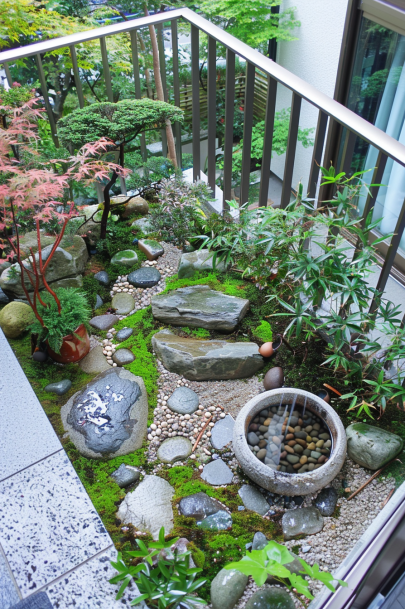
Plants: Since garden spaces in small apartments are limited, your best bet are plants that are easy to maintain indoors, such as Japanese garden plants like bamboo, Japanese maple, and moss.
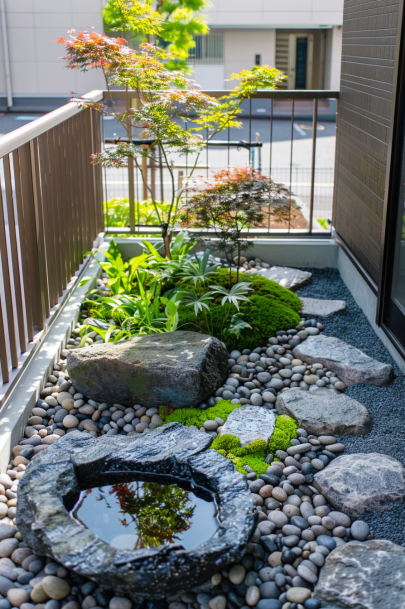
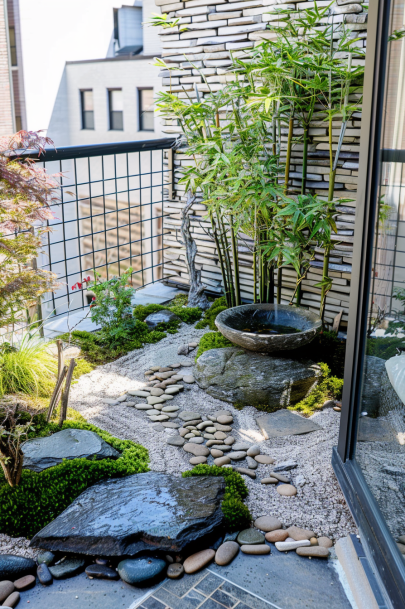
Water Features: A small spout or a stone bowl can bring the wet sound of water into a minimalist residence with minimal space.
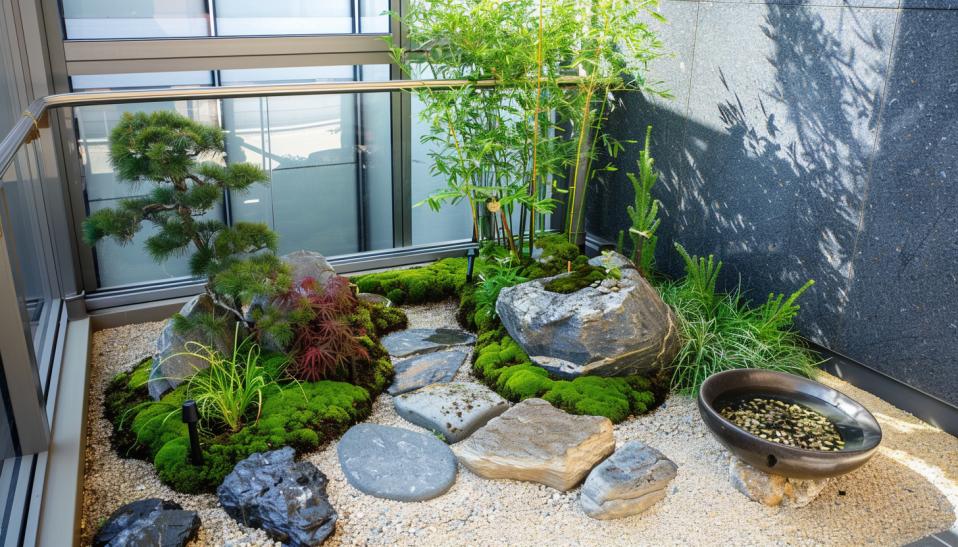
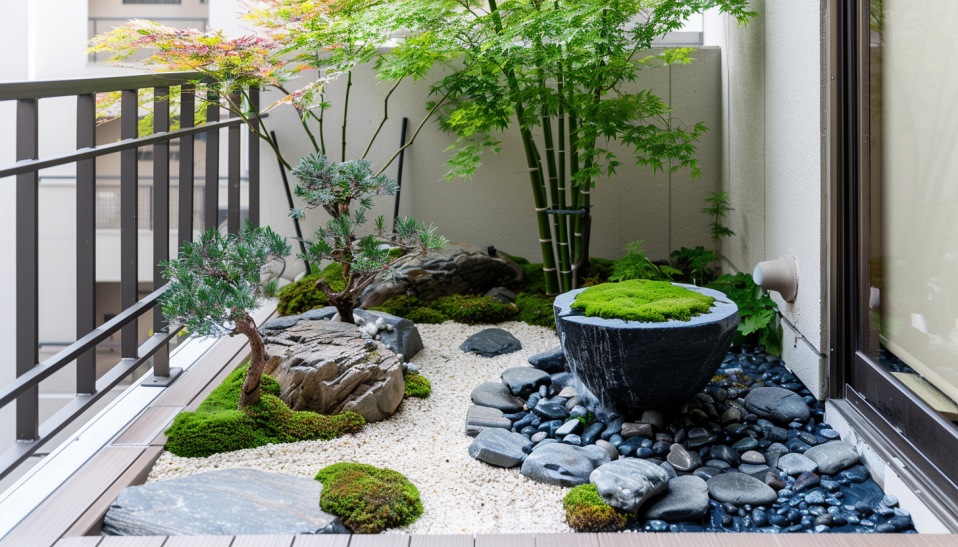
Japanese Garden Landscape Tips
- Focus on simplicity and natural materials.
- Use gravel or sand to create a raked garden that symbolizes the sea.
2. The Koi Pond Centerpiece
Highlighting Japanese Garden Design Ideas
In any Japanese garden you can expect to find a Koi filled pond – a focal point of the garden, as well as a splash of colour and life.
Design Elements: Incorporate a gracefully arching bridge or stepping stones across the pond.
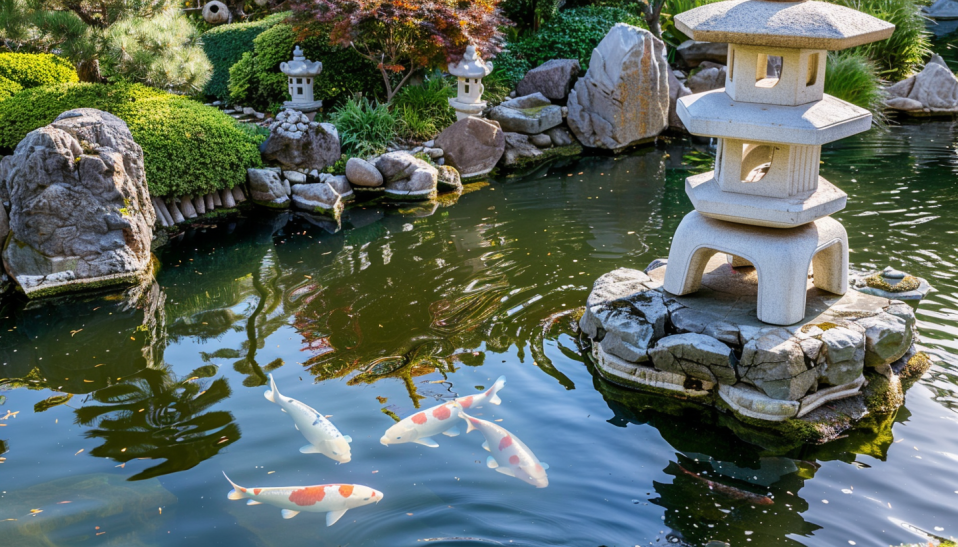
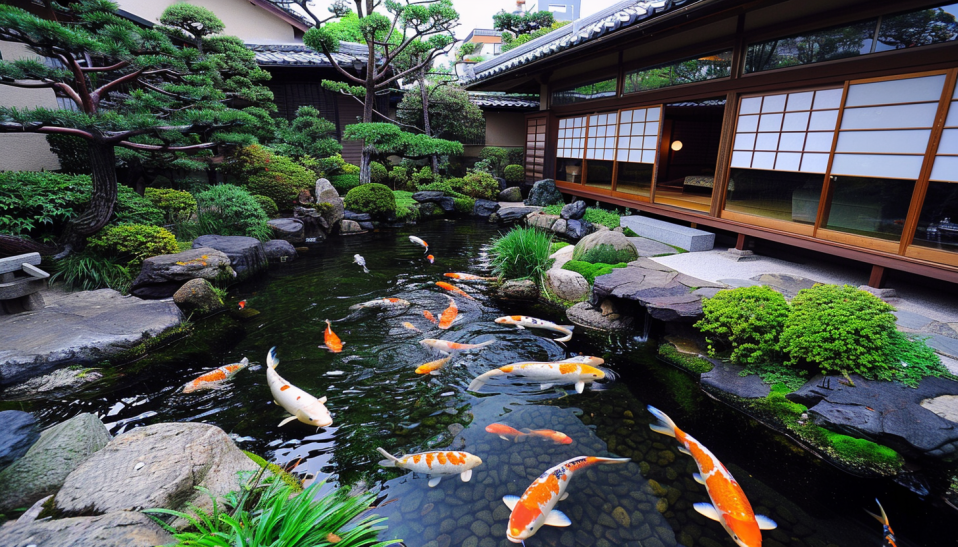
Plant Scene: surround the pond with lush ferns and water plants.
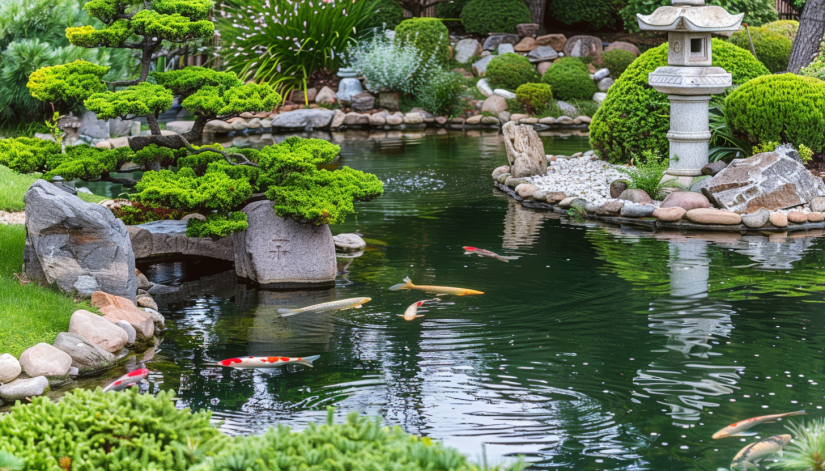
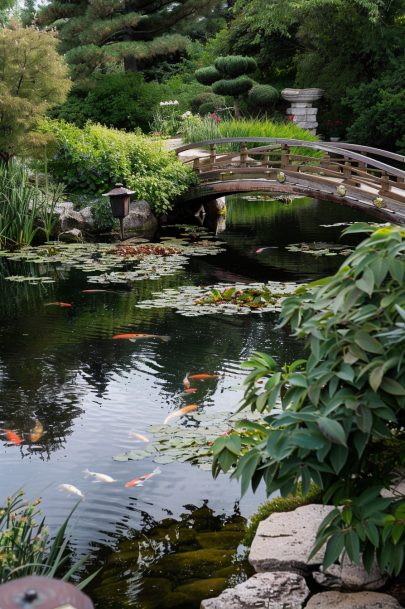
Lantern Lighting: Install stone or metal lanterns to light up the pond at dusk, so you can enjoy the pond’s magic when it’s dark.
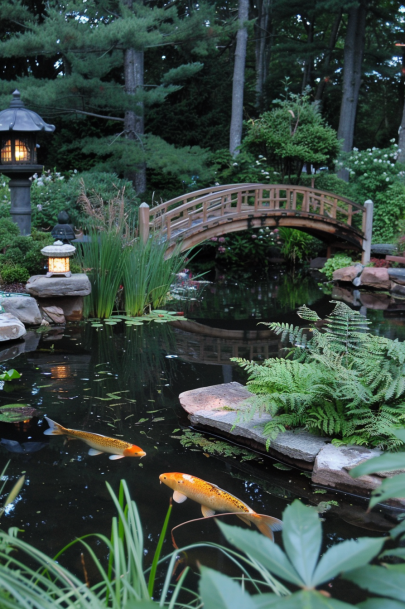
3. Elegant Bamboo Grove
Using Japanese Garden Plants
Bamboo is the ubiquitous plant of Japanese gardens.
It’s durable and it looks serene and elegant.
Privacy screens: Plant bamboo, either straight or in rows, for an effective, attractive privacy screen.
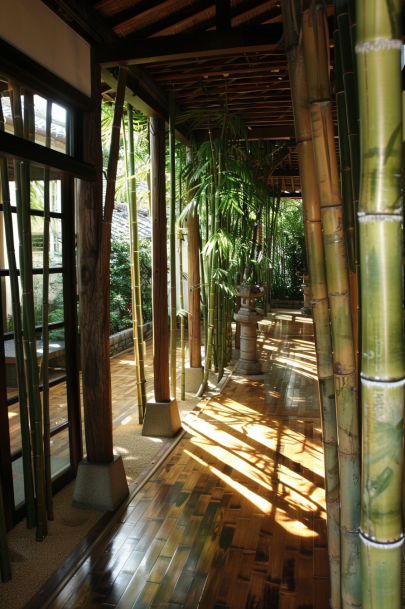
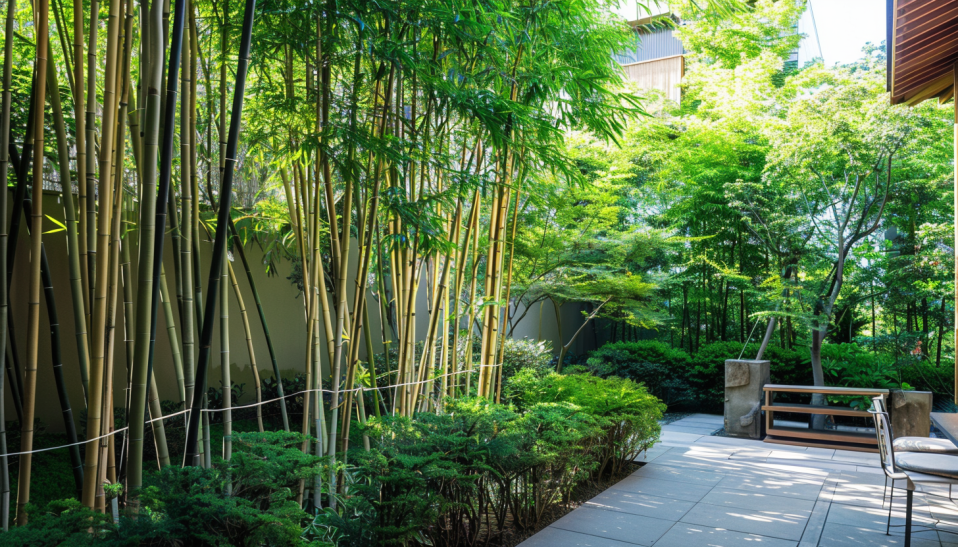
Wind Sound: the wind rustling the leaves of bamboo plants installed in your garden will add an extra layer of relaxation to your acoustic environment.
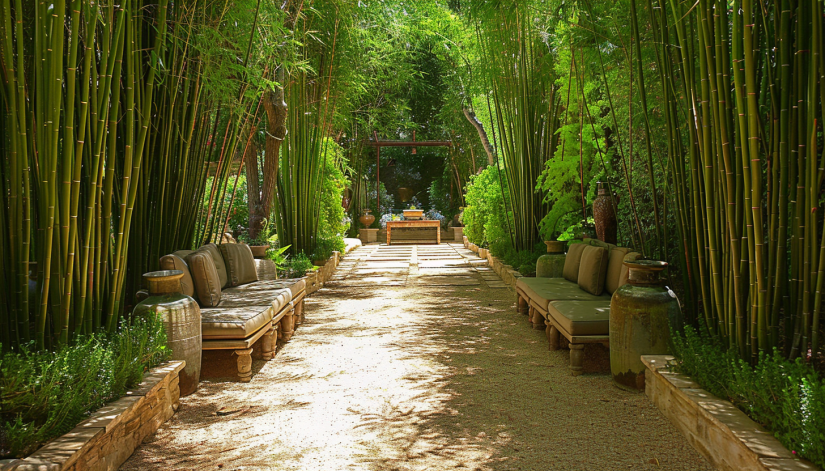
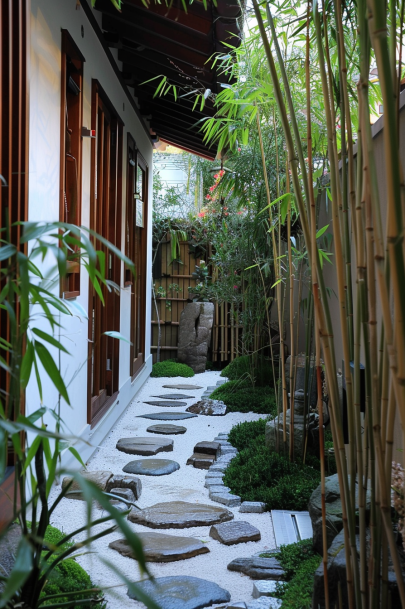
Maintenance: Incorporate rhizome barriers to keep bamboo from overrunning your garden.
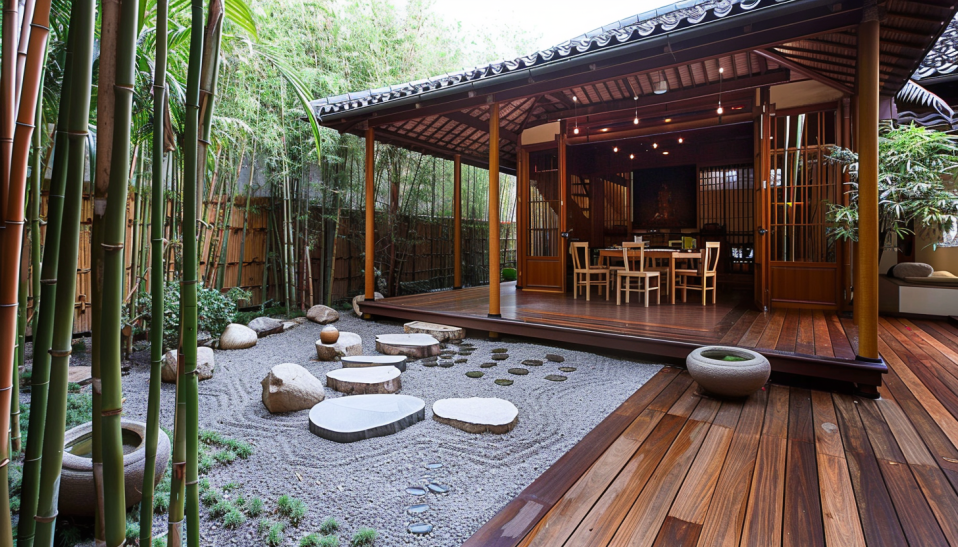
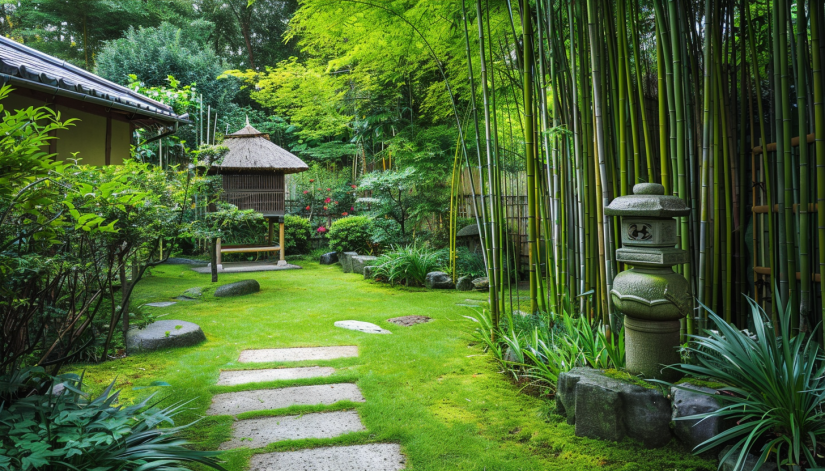
4. The Tea House Retreat
Elements of a Japanese Garden
A tea house (cha-ya) or pavilion (hōjō) is an important feature in almost all traditional Japanese gardens.
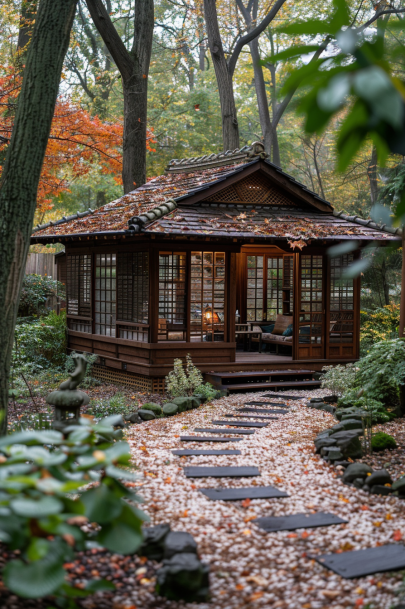
Structure: Typically made of wood and styled with sliding doors and tatami mats.
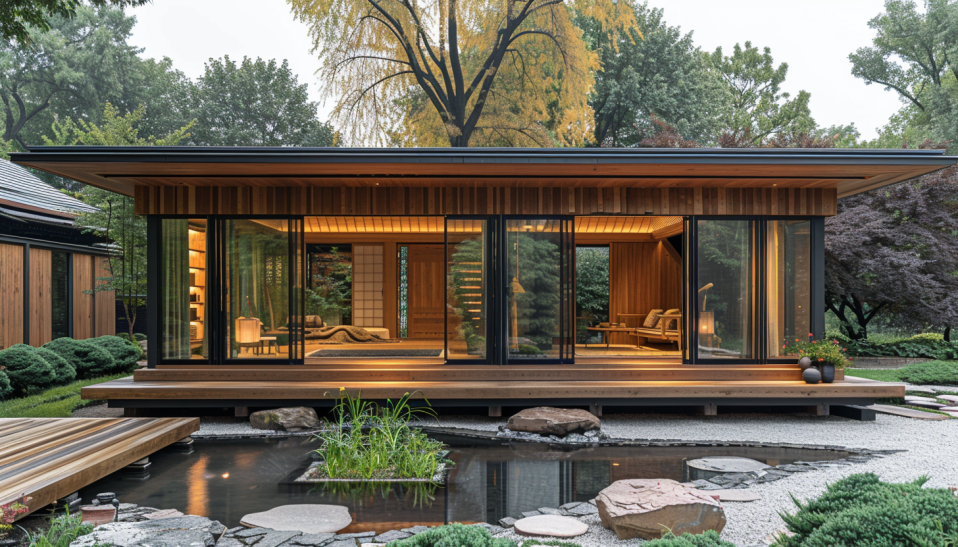
Surroundings: Many traditional medicinal plants are planted around and once in a while, a small water feature is added to make the atmosphere soothing.
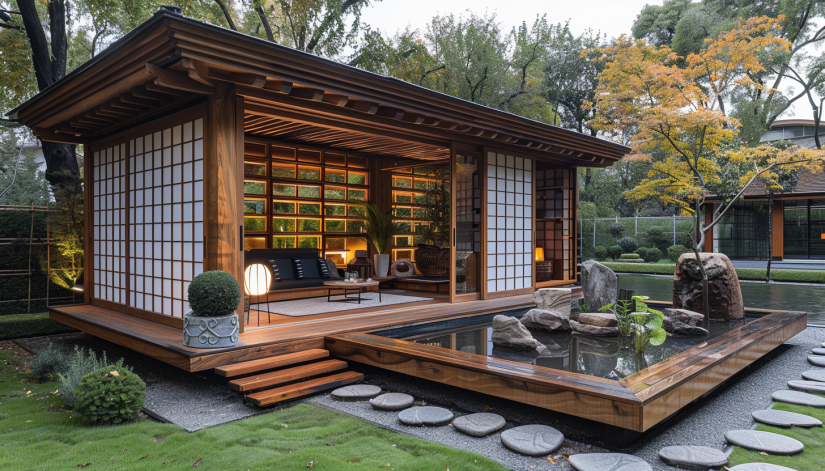
Usage: Use this space for meditation, tea ceremonies, or a quiet reading nook.
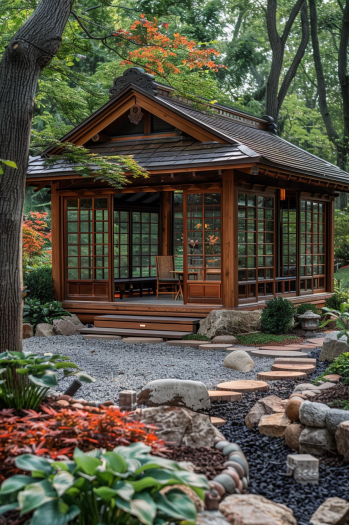
5. The Rock Garden Realm
Small Japanese Garden Simplicity
Rock gardens, or Karesansui gardens, are composed of rocks and sand to simulate a miniaturised landscape.
The next one is Rock Placement: This involves arranging rocks so that there are breaks and gaps where life can flourish. The gaps should be carefully selected and placed.
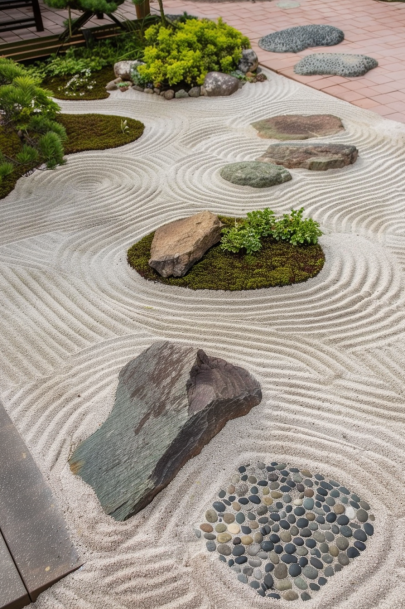
Sand Patterns: Rake sand or gravel to suggest water ripples or waves.
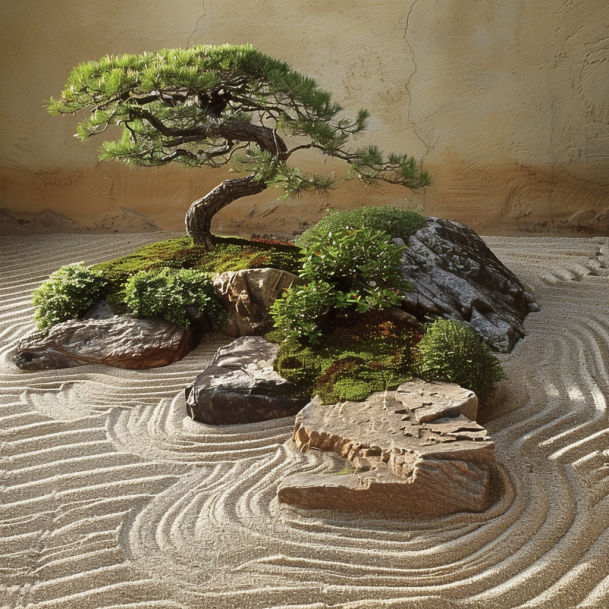
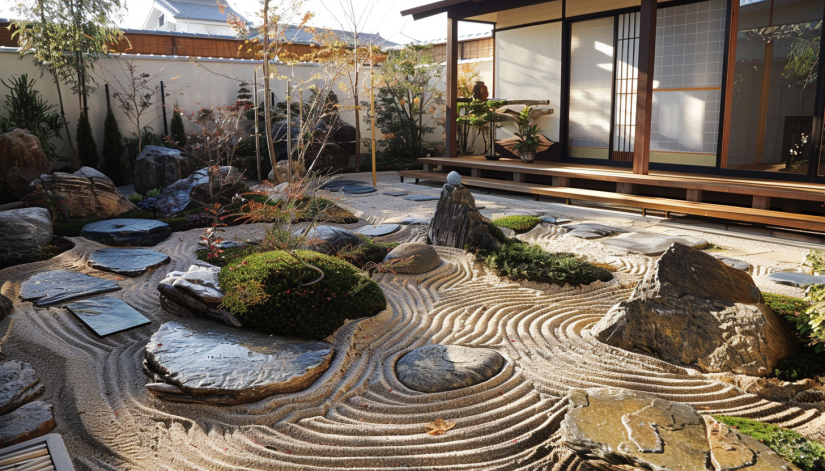
Contrast and Texture: Include mosses or small shrubs to provide greenery and texture against the hardness of the rocks.
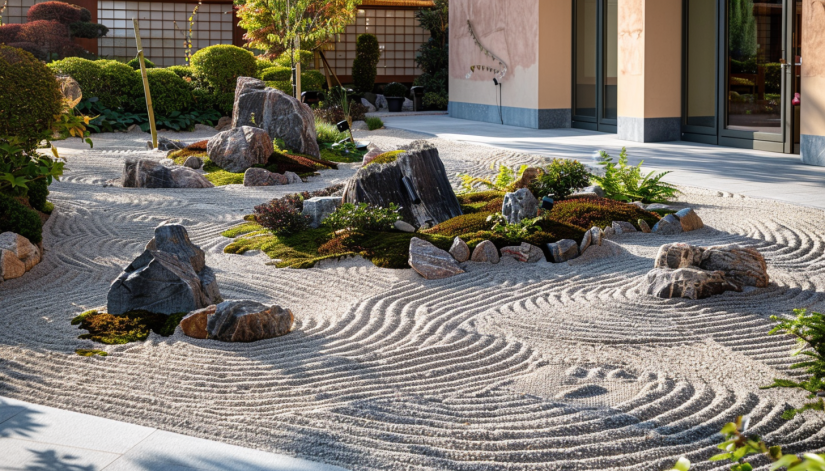
6. The Torii Gate Pathway
Iconic Japanese Garden Landscape
The Torii gate serves as a ritual transition from the mundane to the sacred, a Shinto trope common to shrines – and an excellent fantasy element for a garden path.
Materials: Made of wood or stone, bright red colour among green surroundings.
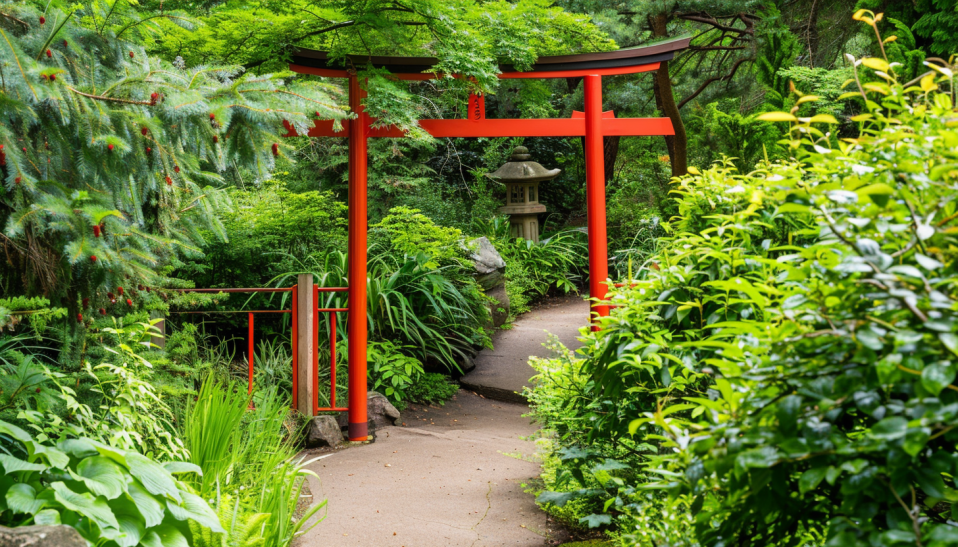
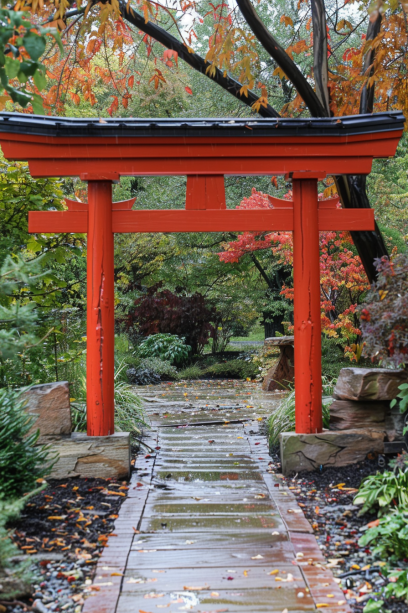
Planting: At the front of your beds leading into your garden or towards a focal point such as a pavilion or statue.
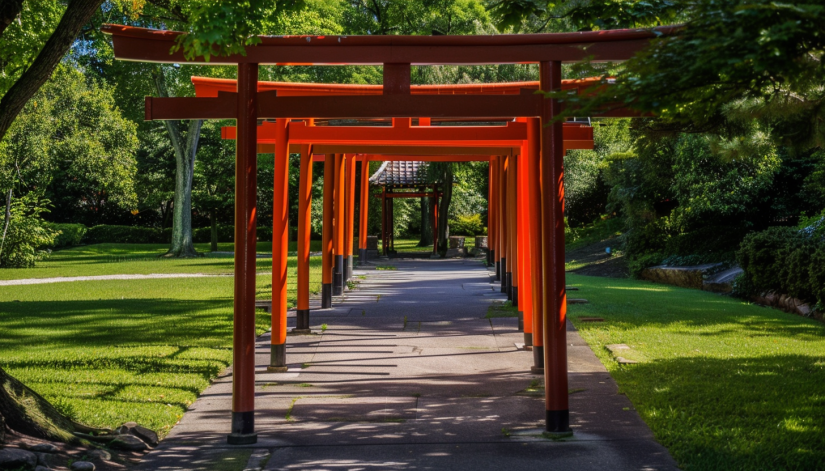
Cultural Significance: Brings a sense of reverence and awe to the garden atmosphere.
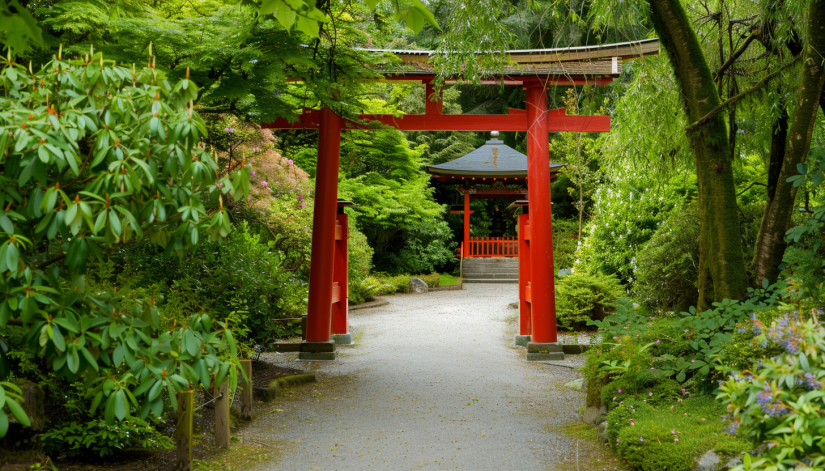
7. The Lantern-Lit Walkway
Japanese Garden Lanterns Ideas
Stone lanterns are not decorative; they should be light sources, guiding the way along the path (or the garden) at dusk.
Lanterns Type: Yukimi (snow-viewing); Taimaishi (pedestal lantern); etc.
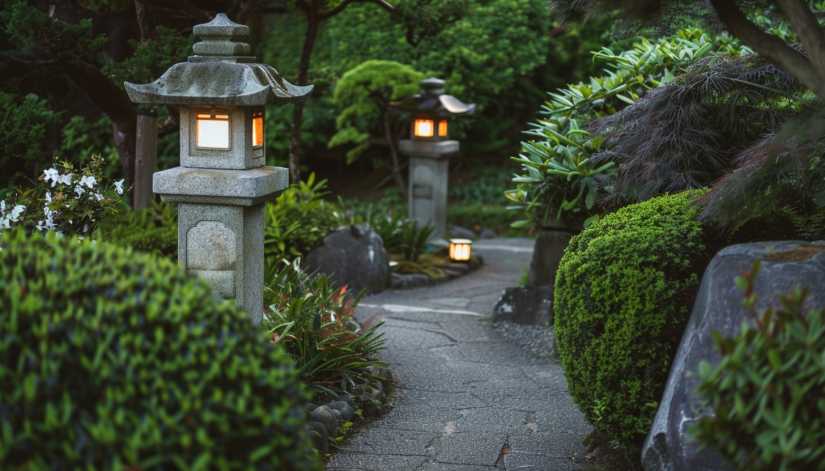
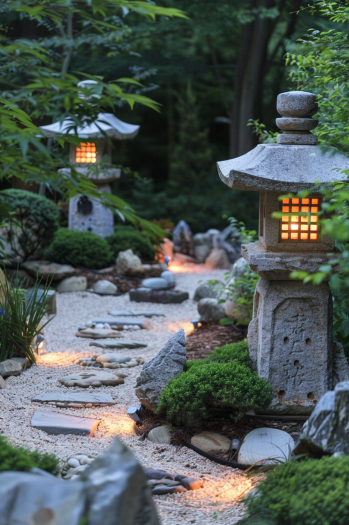
Path Placement: Place lanterns to the sides of pathways: this will illuminate night-time walks and emphasise plant features.
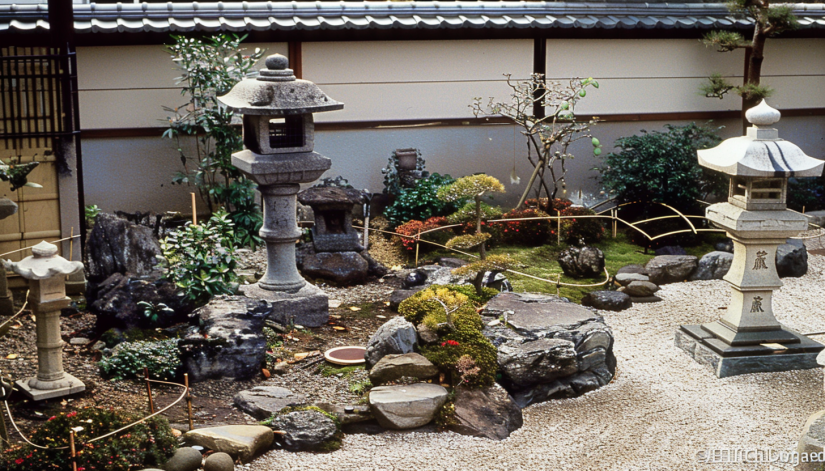
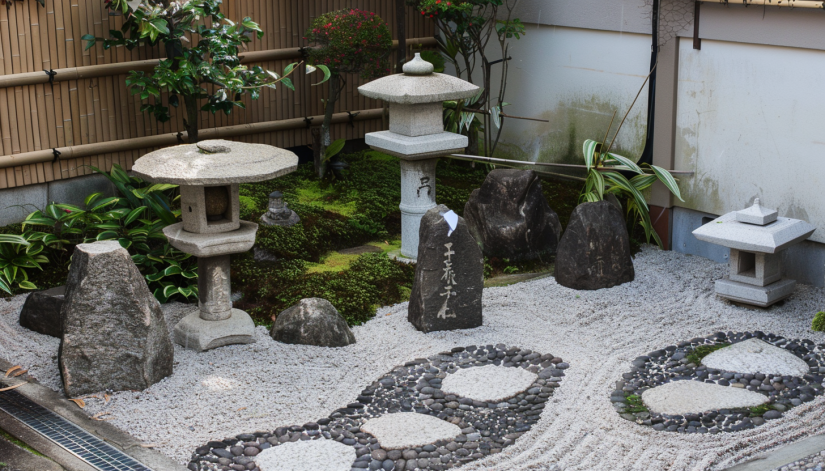
Material Continuity: Make sure the material of the lanterns works well with other stone elements in your garden.
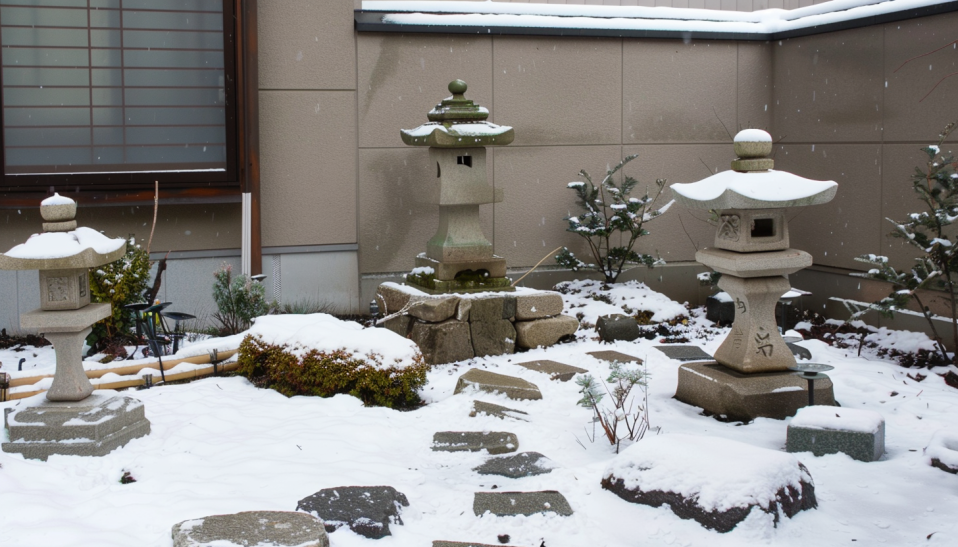
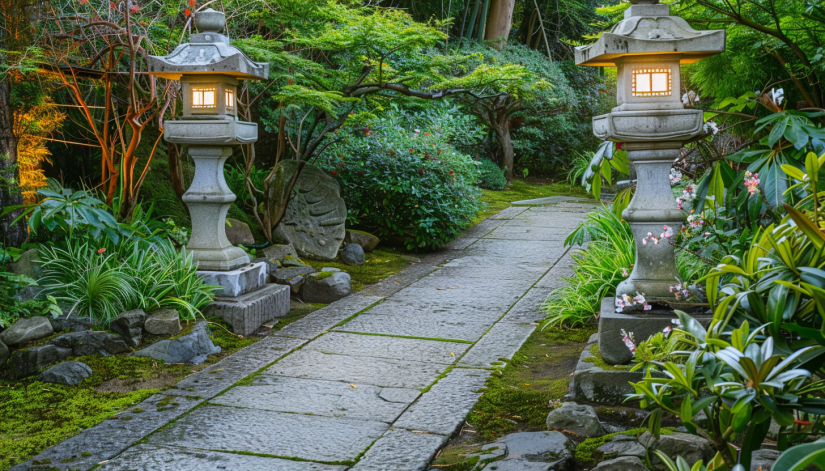
8. Sublime Stone Arrangements
Core of Japanese Garden Design Ideas
A stone might be incorporated as a central element or as an accessory in a Japanese garden. It can represent a mountain or an island or even an animal depending on its composition.
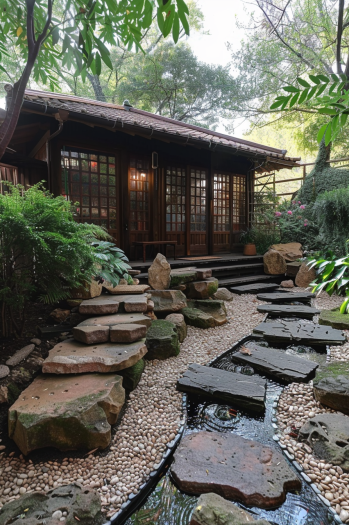
Balance and Scale: Use stones of varying sizes to create depth and perspective.
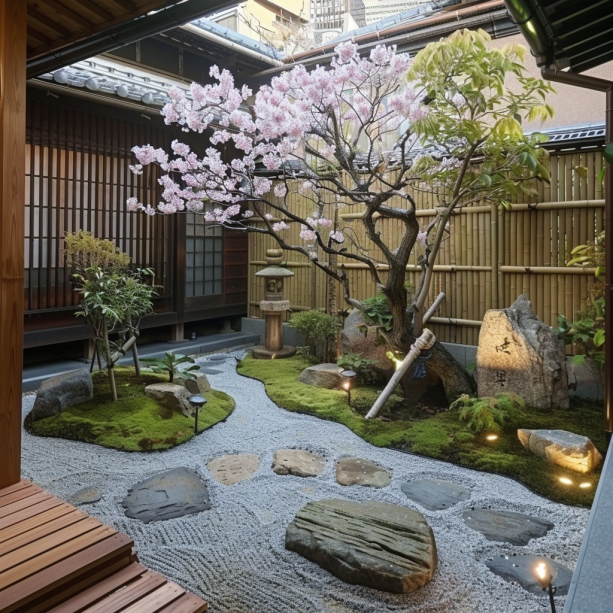
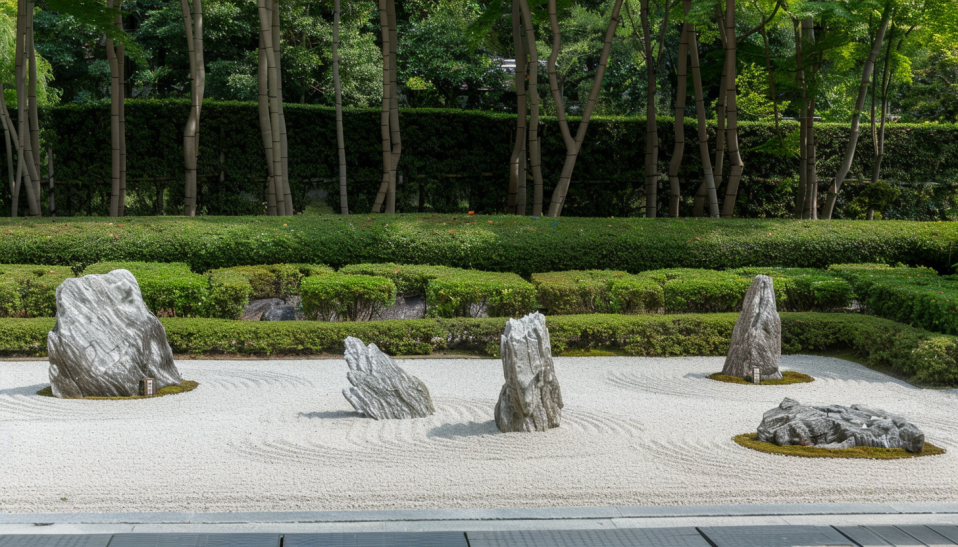
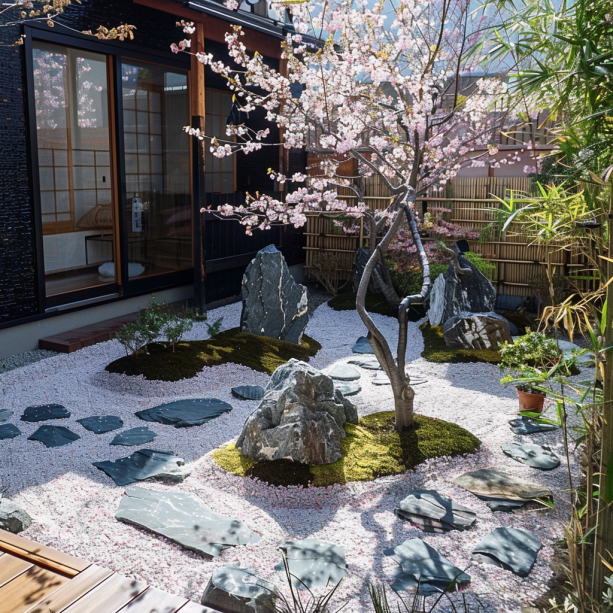
Intergration: Place the stones so they appear to belong there; half-burying them will help.
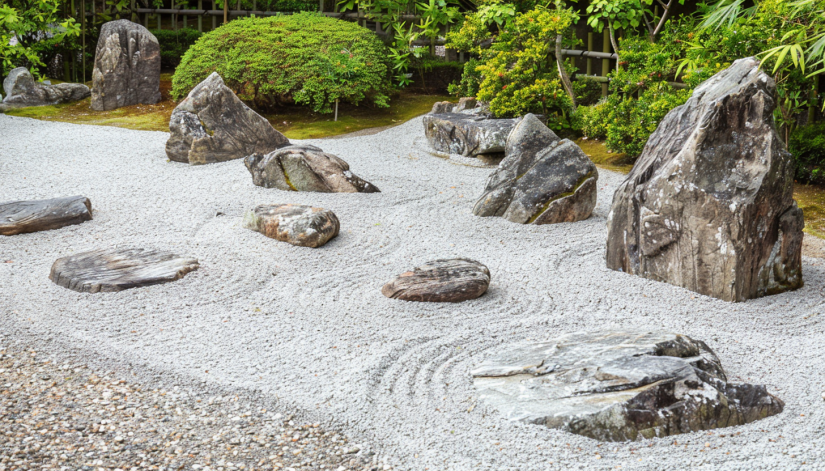
Minimalism: A few stones, well-placed, can make more of an impression than many in a tight cluster.
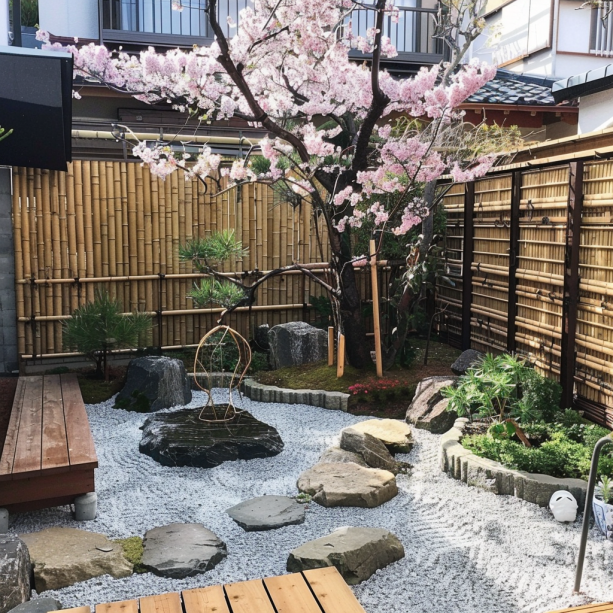
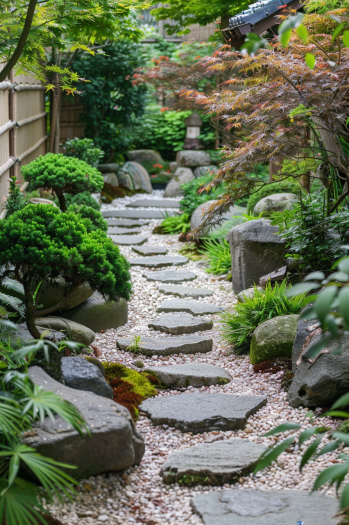
9. The Floral Serenity
Japanese Garden Plants Detail
Although flora is used in Japanese gardens, flowers are not the primary feature, and if used are usually selected for their form and colours to blend in with the rest of the garden.
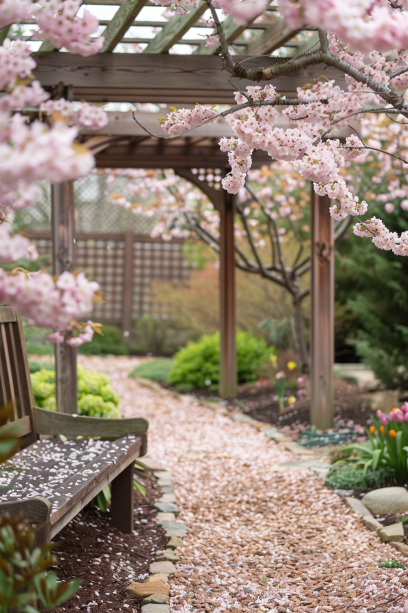
Color Palette: Max out on variety. Stick with the same hue throughout the garden.
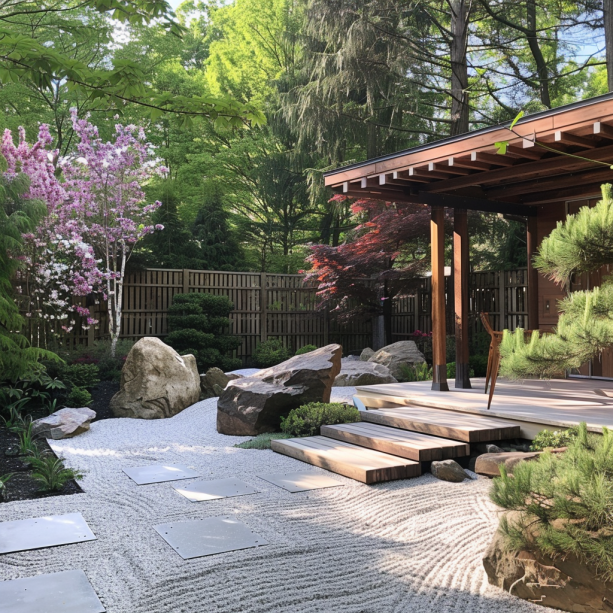
Color Coordination: Keep the colour count low and harmonise with nature to generate a Zen mood.
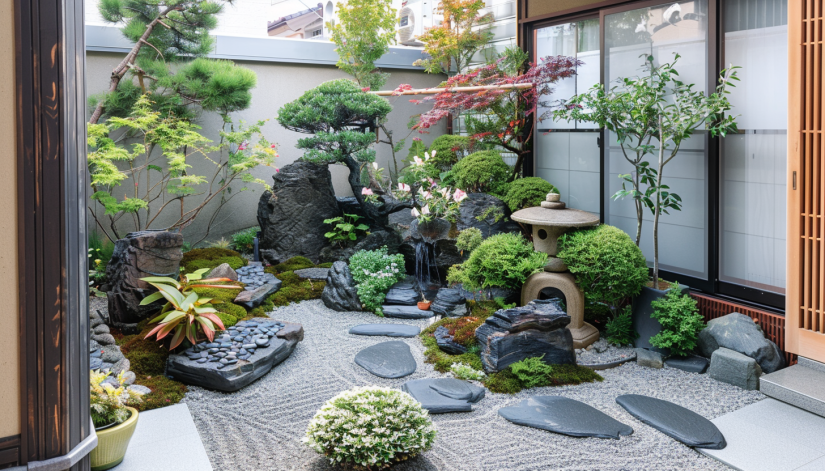
Seasonal Blooms: Choose species that bloom during different seasons for a year-round appeal.
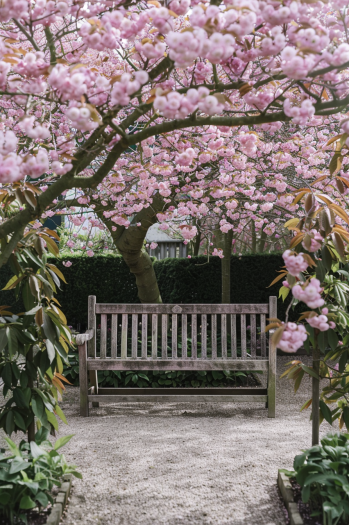
10. Waterfall Oasis
Dynamic Water Features in Small Japanese Garden
Waterfalls provide a dynamic visual element and a pleasant, splashy sound to the Japanese garden.
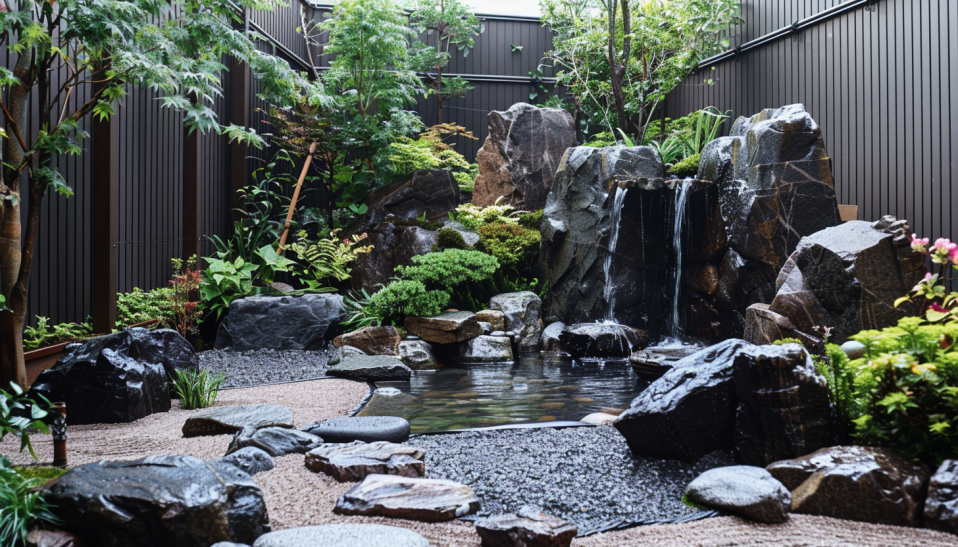
These are often the centrepiece, but can be as large or as small as the space allows.
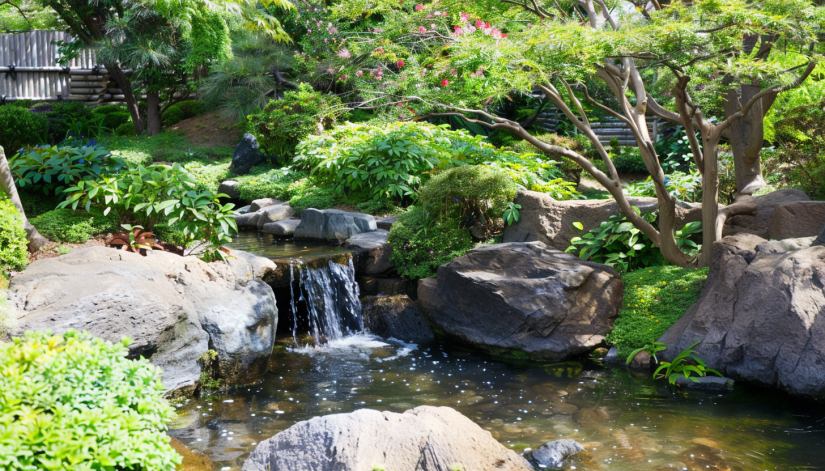
This is a natural look: design the waterfall so that it looks like it belongs.
Use rocks: Use large rocks for the basin and small stones for the water paths.
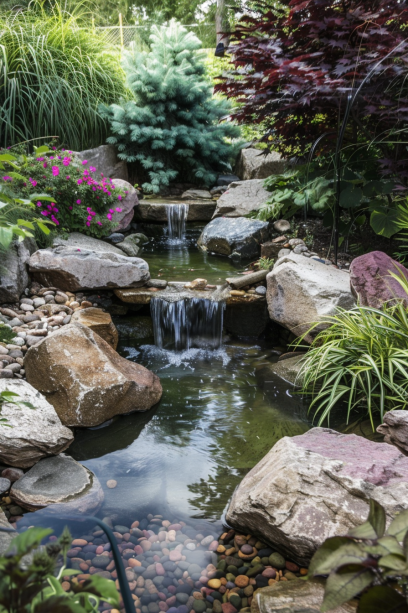
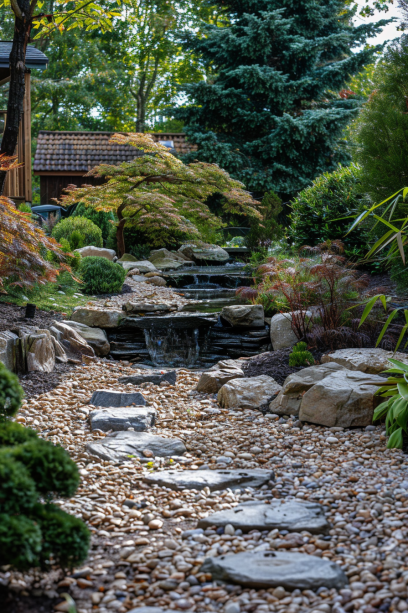
Plant Integration: Position lush plants around the waterfall to enhance its natural appearance.
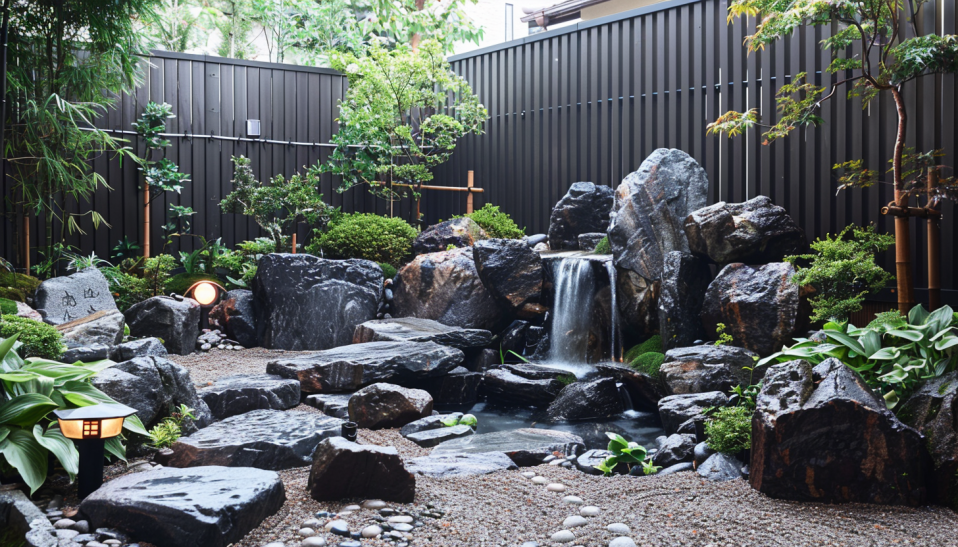
11. The Winding Stream Garden
Flowing Water in Japanese Garden Landscape
You could have a lovely, burbling stream in your garden that would really help to make it pleasant and beautiful, like nature.
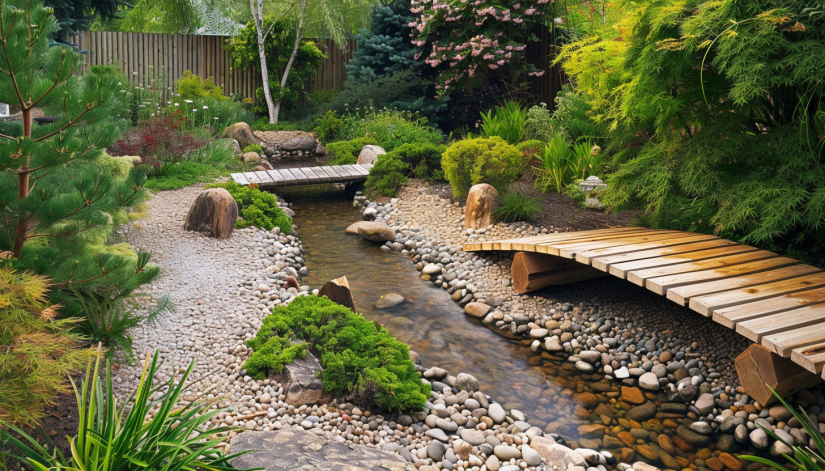
Curve and slow: Shape the stream to meander through the garden, and meanders slow the flow of water, prolonging the sound it makes.
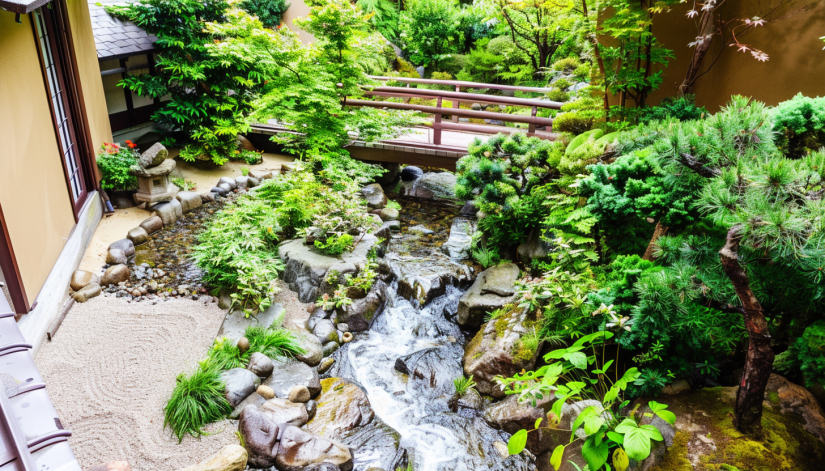
River Pebbles: Accent a flowing stream with river pebbles for a natural look that is easier to keep clean.
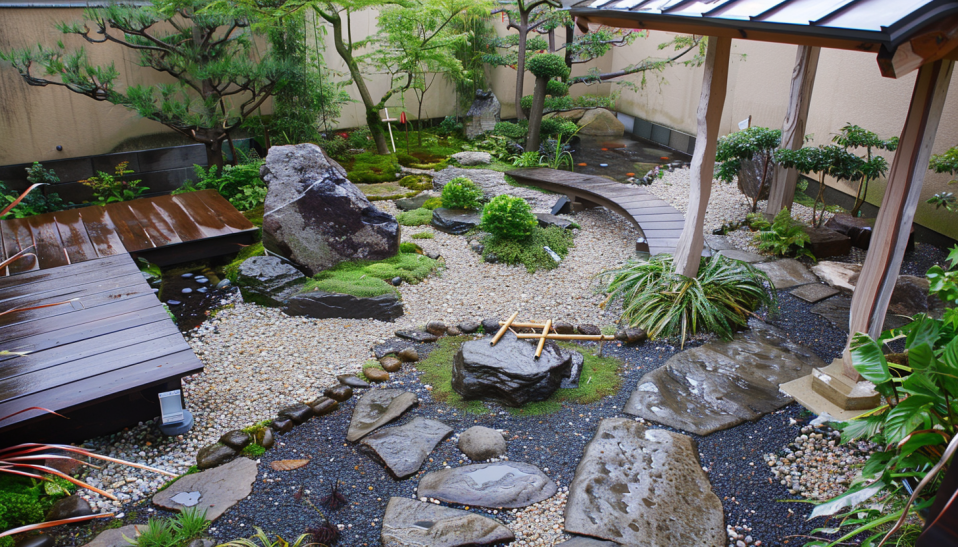
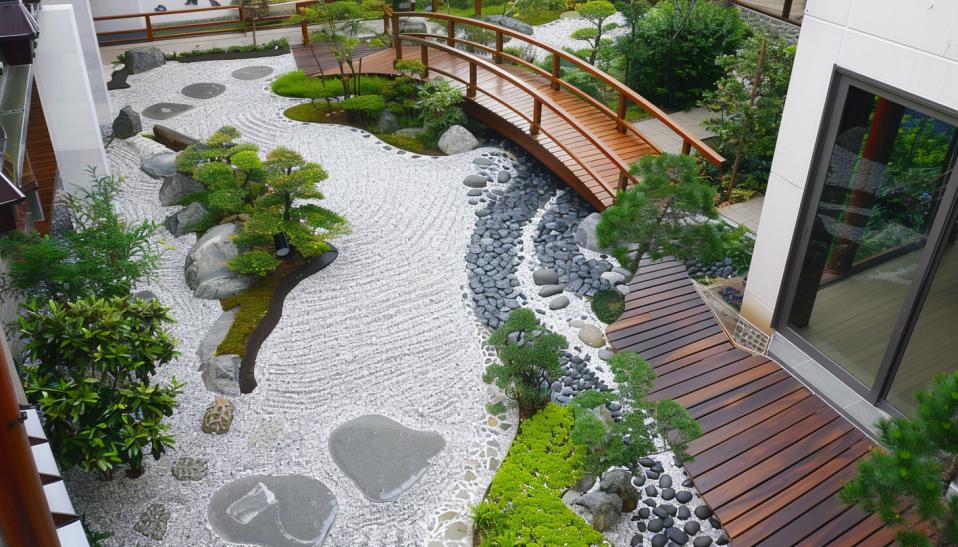
Bridge Crossings: Add small footbridges across the narrow bits of the stream. They look charming and they’re functional.
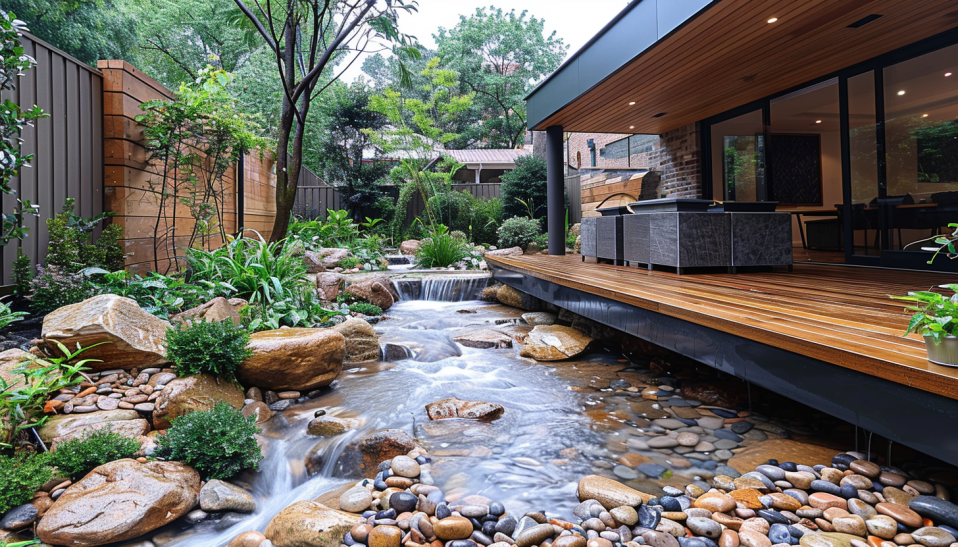
12. Shaded Woodland Path
Embracing Shade in the Japanese Garden Design
Not all parts of the garden are fully exposed to sunlight and this design embraces the cool, shady areas under the trees for a woodland path.
Ferns and Mosses Shade-tolerant plants such as ferns and mosses grow well beneath the forest canopy.
Natural pathways: paths snaking through landscaping, mulched areas and/or flagstone pathway blending into the landscape.
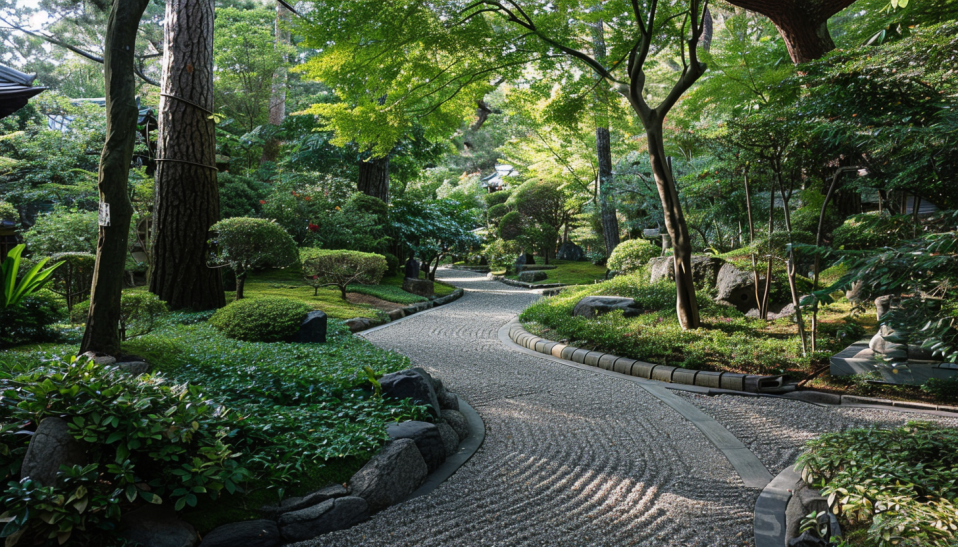
Integrated Lighting: Provide low-level accent lighting along the path for night-time use that is integrated into the woodland surroundings.
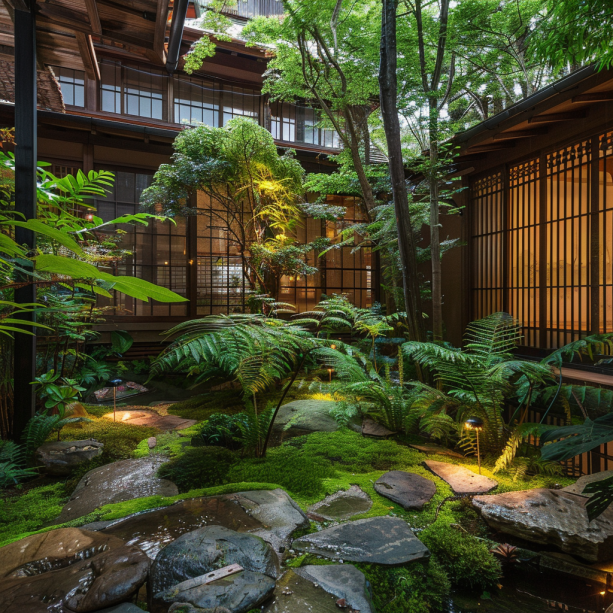
13. Zen Sand Garden
Small Japanese Garden Focus
An excellent choice for small gardens or as a meditation area in a larger garden, the sand garden, or dry landscape, is a hallmark of Japanese Zen monasteries.
Raked patterns of sand or gravel of linear or concentric design, the ripples and waves of water.
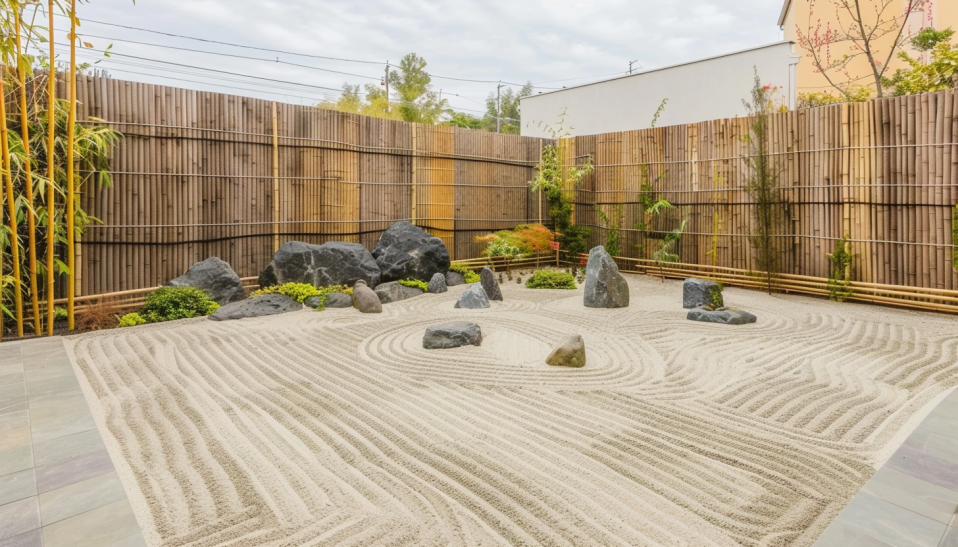
With Minimalist Elements: Use a few large rocks for mountains or island shapes.
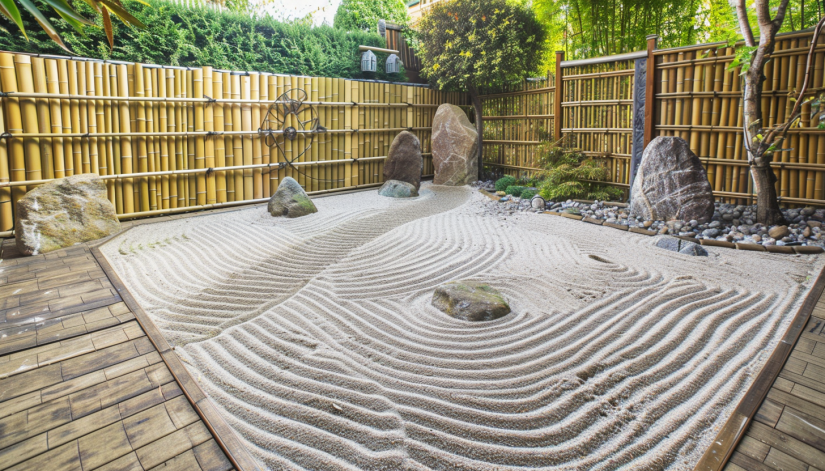
Enclosure: Use bamboo fencing or low walls to enclose a small, intimate space for meditation.
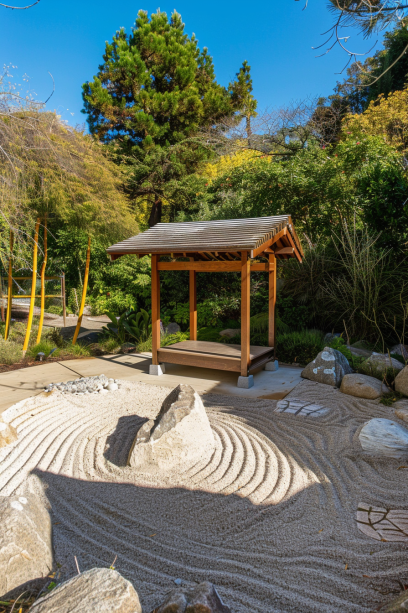
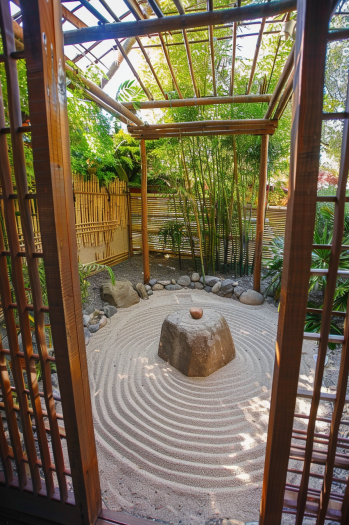
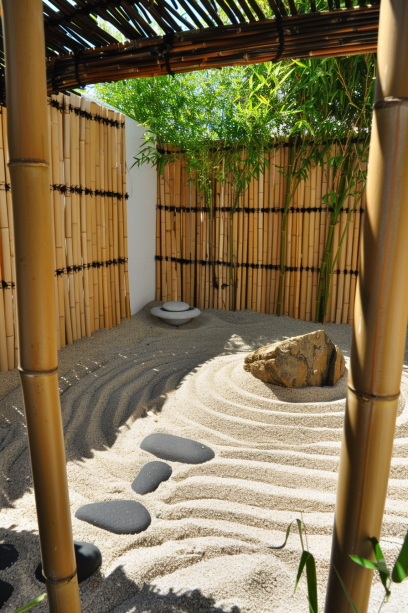
14. The Hill and Pond Garden
Dynamic Japanese Garden Landscape
This design creates an illusion of nature’s landscape through a replicated miniature of hills and ponds, building up a sense of depth and spaciousness in the garden.
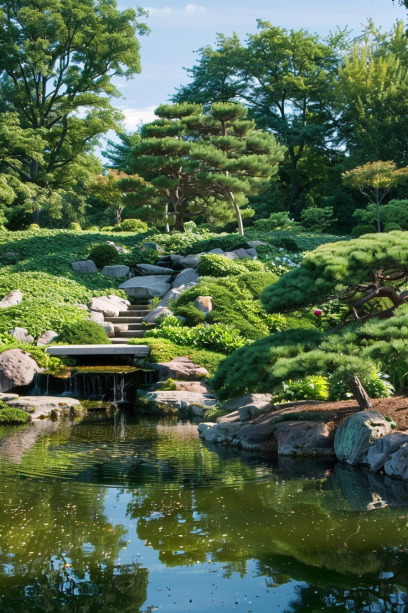
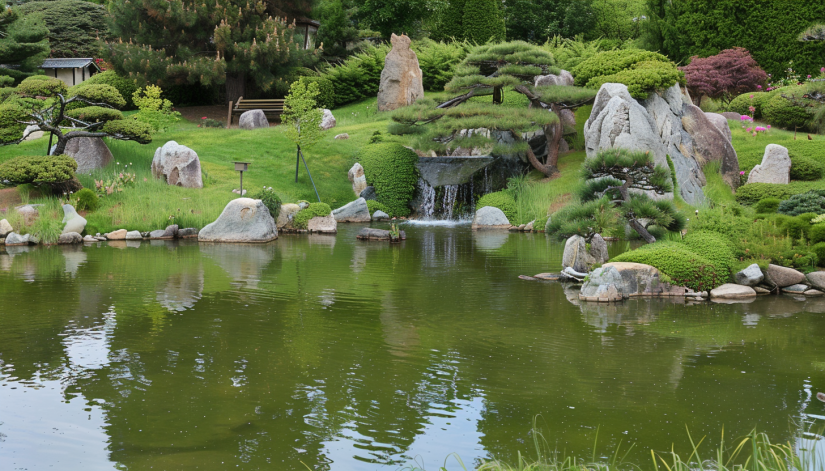
Mounds: Create mounds with soil and rocks, then plant them with grasses and low shrubs to mimic a natural hillside.
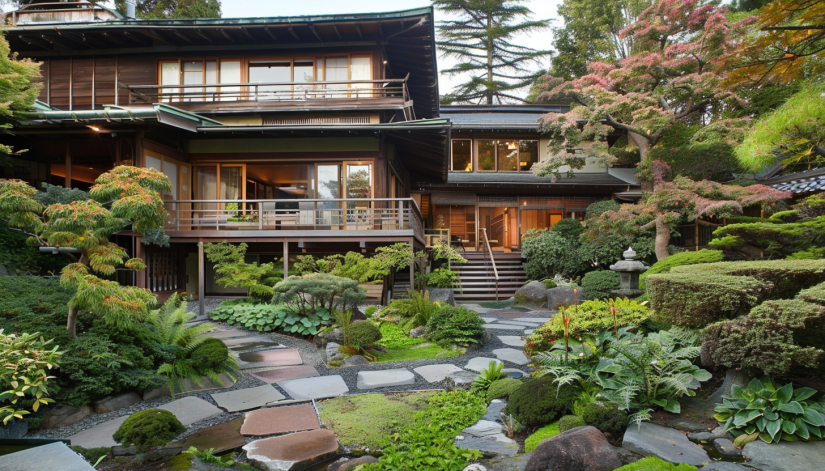
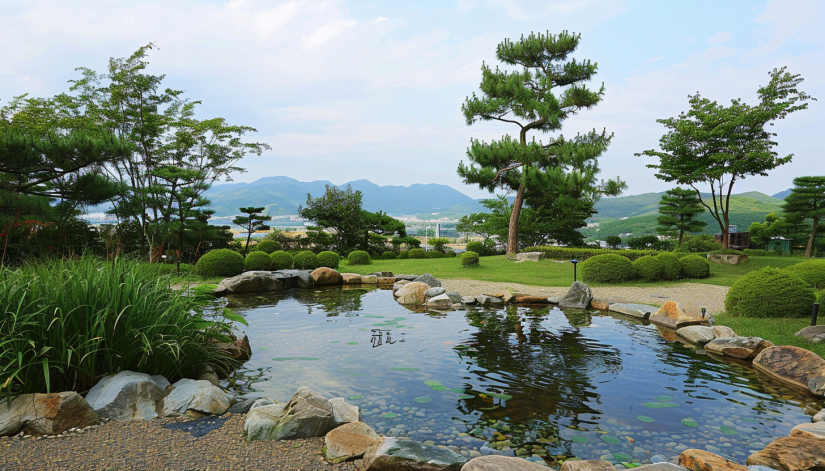
A water feature: Place a pond at the base of the hill, and add motion and life to the garden.
Have a waterfall run down the hill to create a natural connection between the hill and pond elements.
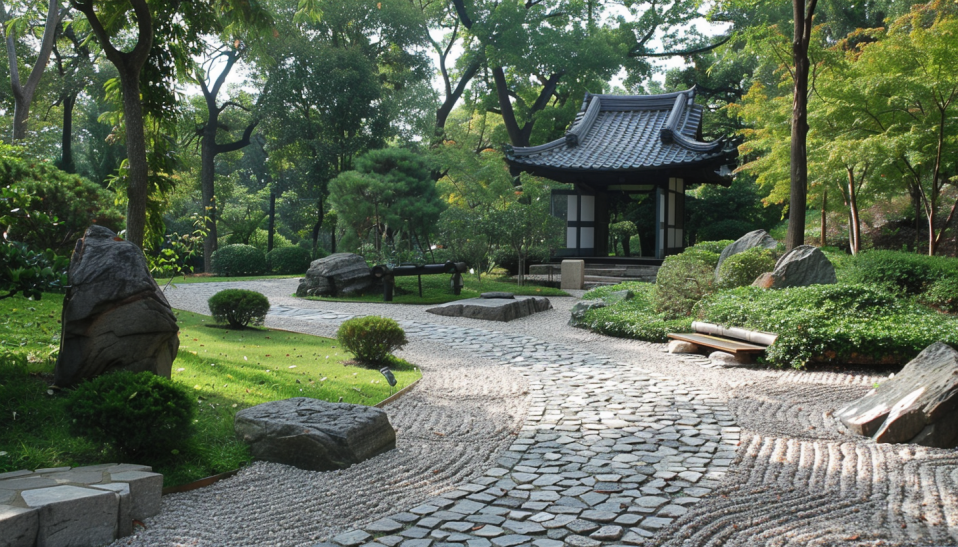
Viewing points: Locate seating or standing places on key points to experience the view from various directions.
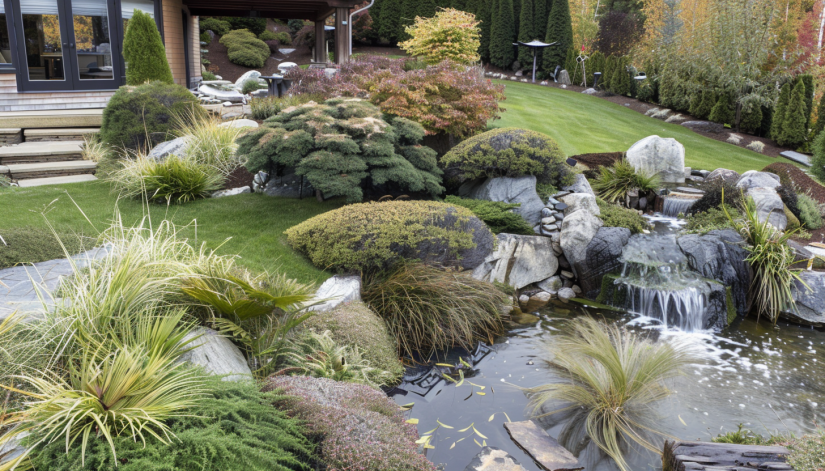
Plant Choices for Japanese Gardens
Your choice of plants plays a key role in creating a genuine Japanese garden and in achieving those fundamental Japanese values of simplicity, naturalness and reverence.
In this section, we’ll be delving further into some of the classic Japanese garden plants and looking at their benefits and how they can be used in your garden design.
Essential Plants for a Japanese Garden
Bamboo
- Pros: Bamboo is strong, easy to cultivate, and lends you elegant vertical lines – good for privacy screens or a backdrop.
- Cons: Can become invasive if not managed properly. Requires containment measures to control spread.
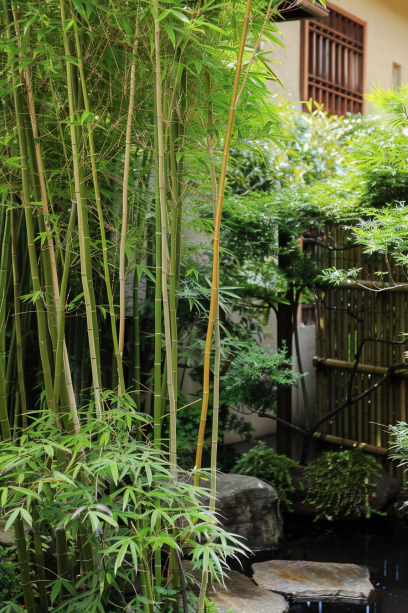
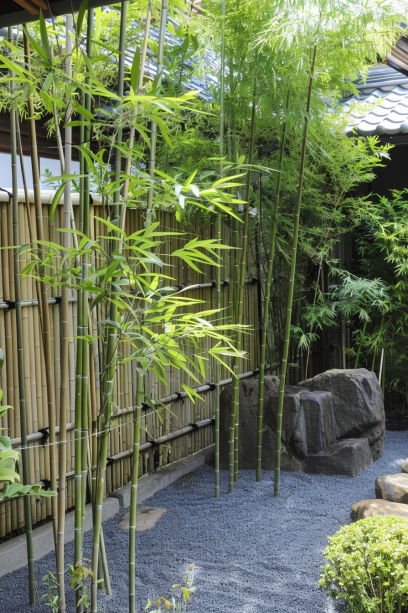
Japanese Maples (Acer palmatum)
- Pros: Beautiful all year, especially in fall. Available in a wide range of sizes and styles, to suit different garden scales.
- Cons: Needs shade from the hot afternoon sun and is vulnerable to pests and diseases when planted in a humid climate.
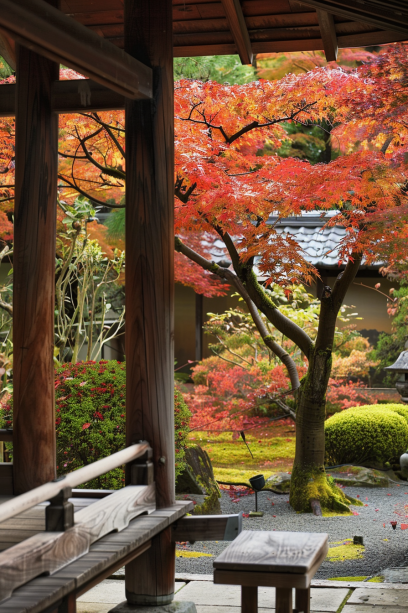
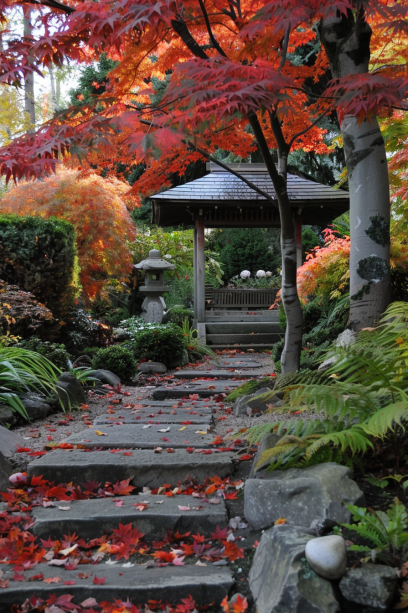
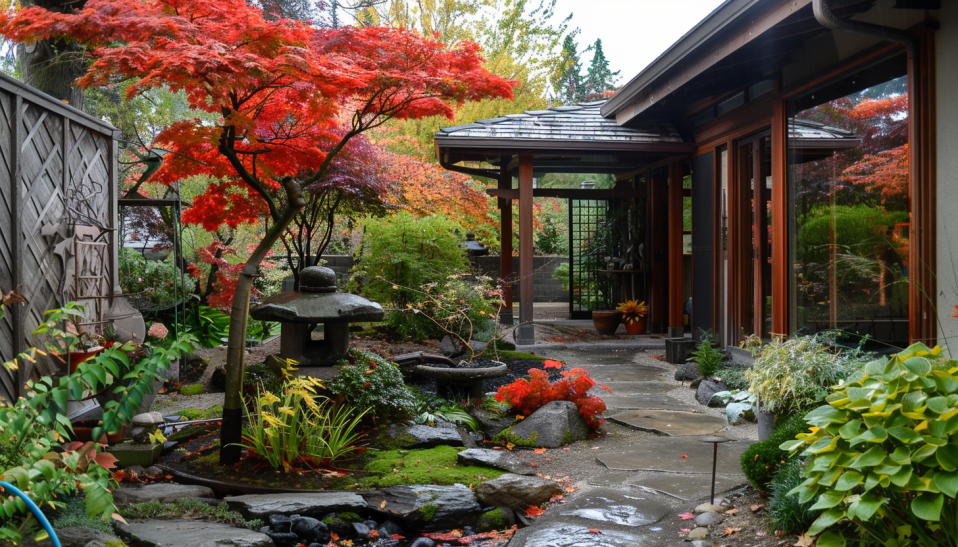
Azaleas and Rhododendrons
- Pros: Spring and early summer flowers in a multitude of sizes and colours; evergreen forms for year-round interest.
- Cons: Requires acidic soil, consistent moisture, and must be protected from harsh winds.
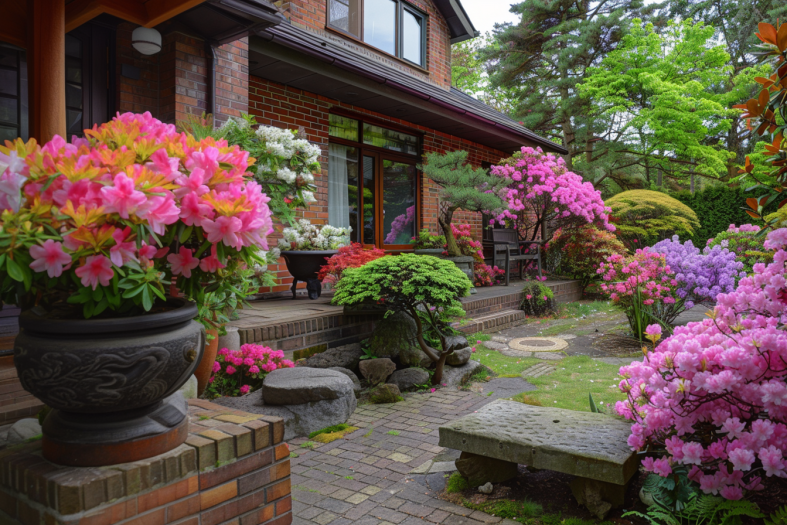
Mosses
- Pros: nice looking, like a green carpet; loves wet, shady places; tolerates poor soil.
- Cons: Shade-loving and water-hungry, this option can be time-consuming to establish and maintain.
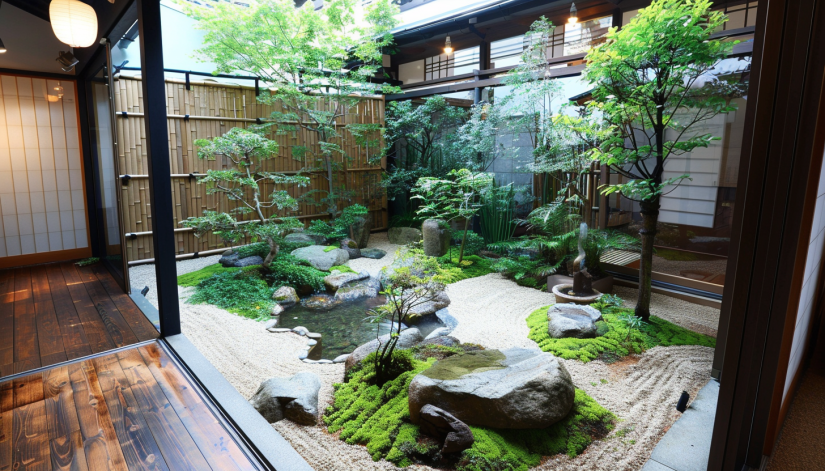
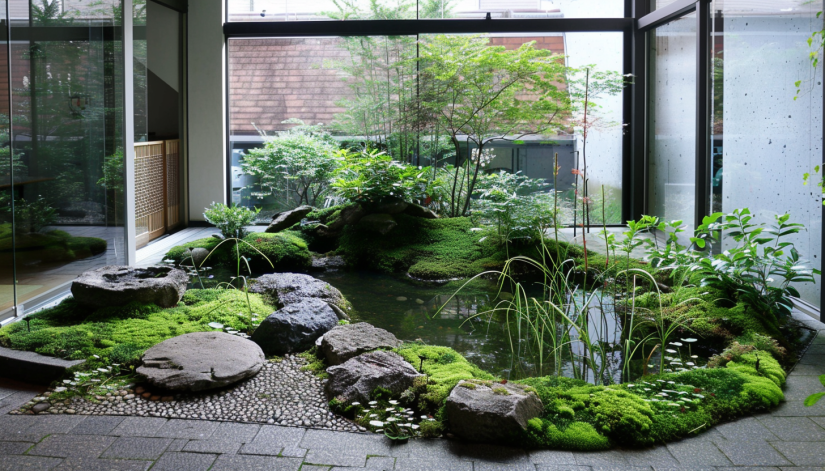
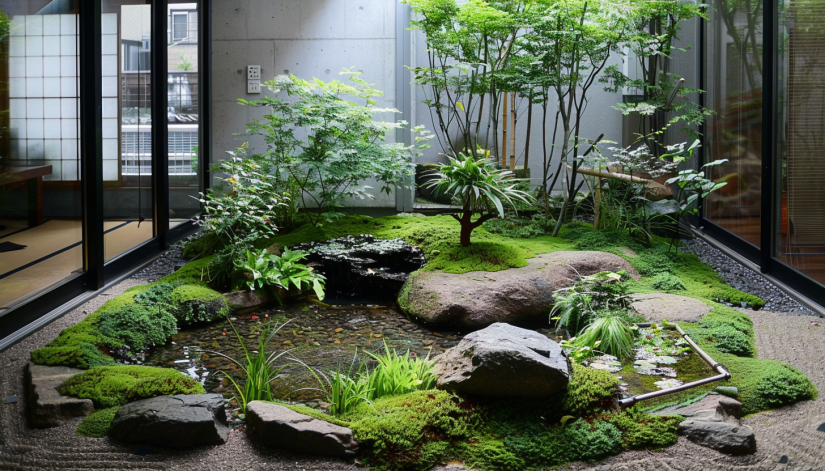
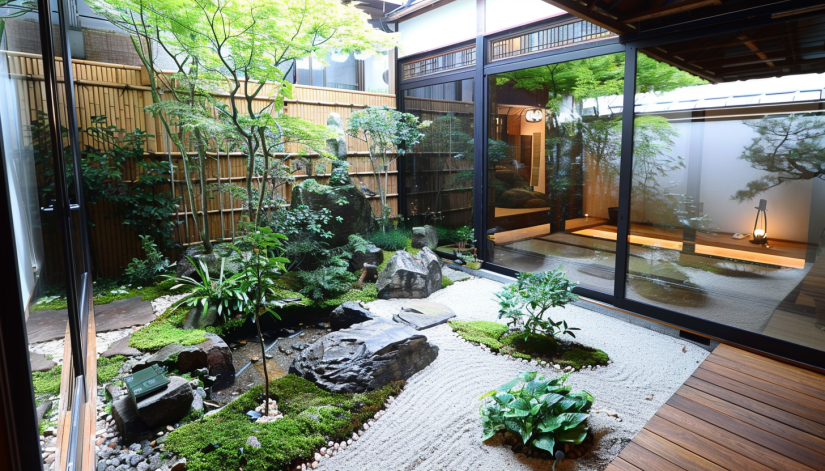
FAQs on Japanese Garden Plants
How do I choose the right plants for my Japanese garden?
Choose plants according to your climate zone, garden scale and amount of sun and moisture your garden can provide, as well as symbolic meanings of plants in Japanese tradition.
Can I use non-native plants in a Japanese garden?
You can use non-native plants that have the same aesthetic features and growth requirements as native plants plus others used in traditional Japanese gardens. Do not let them disrupt the garden’s harmony.
What are some other plants commonly seen in Japanese gardens?
The other plants are Cherry Blossoms (Sakura), Katsura, Ferns, Irises and Pine trees. The plants each add a different texture, colour and shape to the garden.
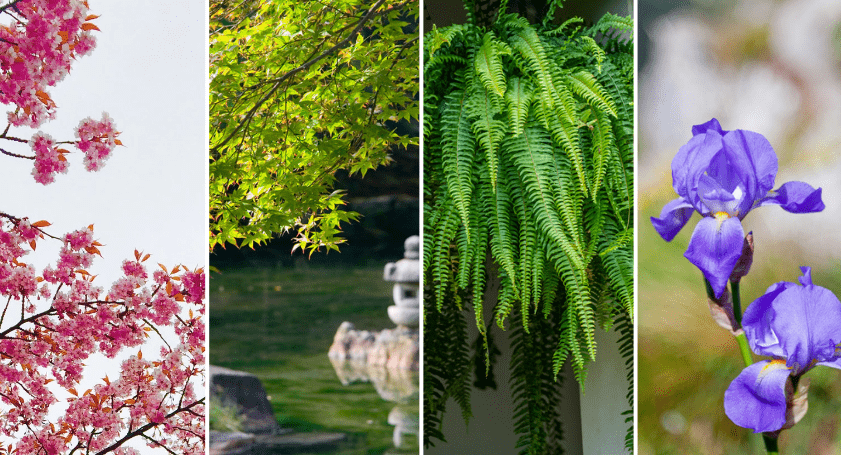
But besides making your Japanese garden more beautiful and authentic, these plants can also help you attain the ideal of a garden that is both a place of sanctuary and an image of natural beauty.
Take care in your selection and maintenance, and your garden will remain a place of tranquil natural beauty for many years to come.
Integrating Japanese Garden Lanterns
Choosing the Right Lanterns
Choose lanterns that are at a scale appropriate to your garden.
Stone lanterns (ikekomon) are among the most traditional and come in several styles such as the Yukimi (snow-viewing lantern) or Tachi-gata (pedestal lantern).
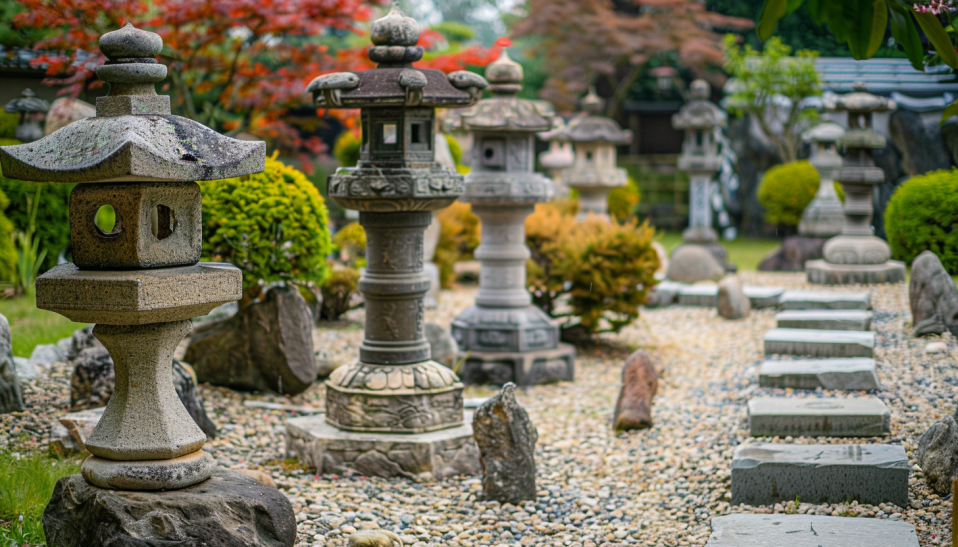
Placement for Maximum Impact
Hang lanterns along paths to show visitors the way, or by a pond to add a shimmering reflection.
You’re not just ensuring safety, but also making the garden look good at twilight.
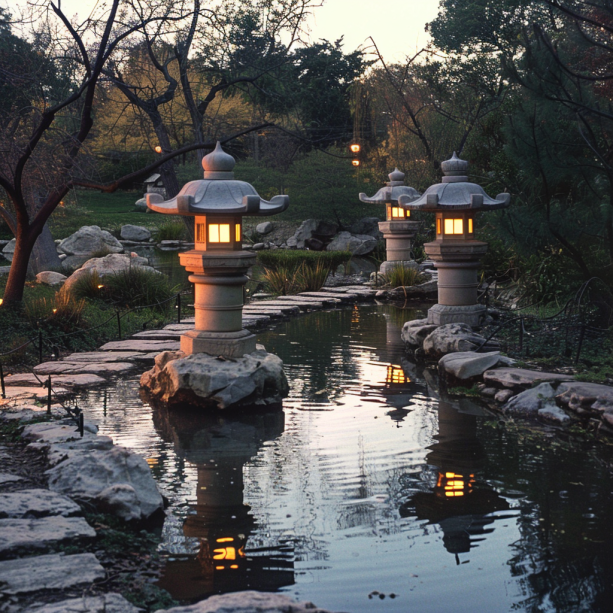
Creating Ambiance
The soft light cast by lanterns will make the garden at night more magical, calm and mysterious.
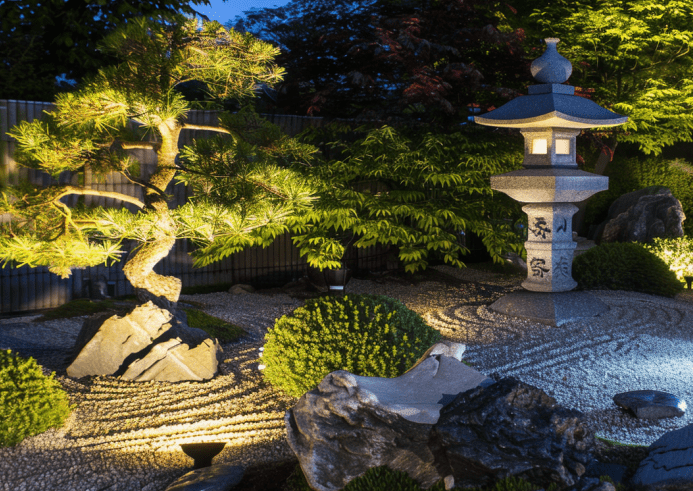
Use them to mark a particular spot like an interesting bonsai or sculptural rock formation.
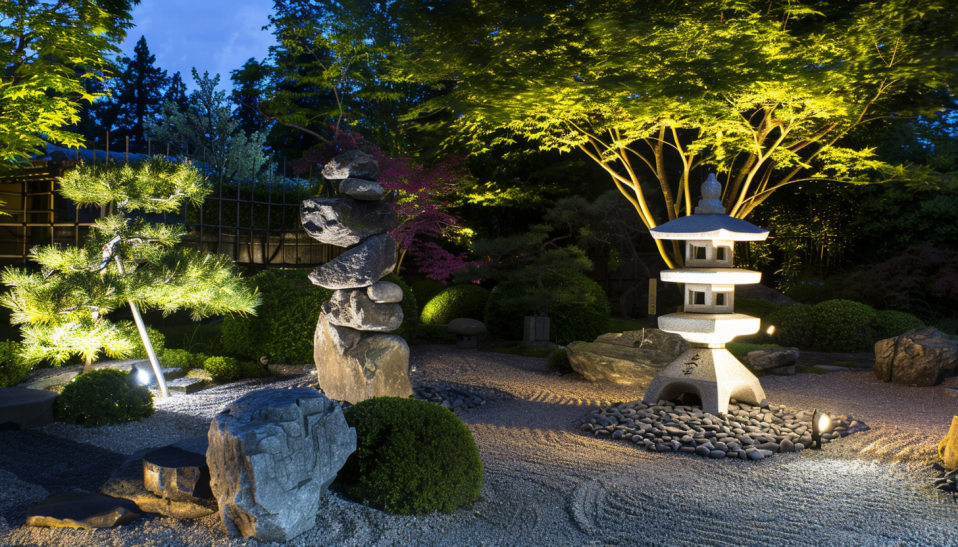
Elements of a Japanese Garden
Water: representing purity and the flow of life; include as water features as ponds, streams or waterfalls.
Rocks: Foundations of the garden, representing islands or mountains, providing structural landscape layers.
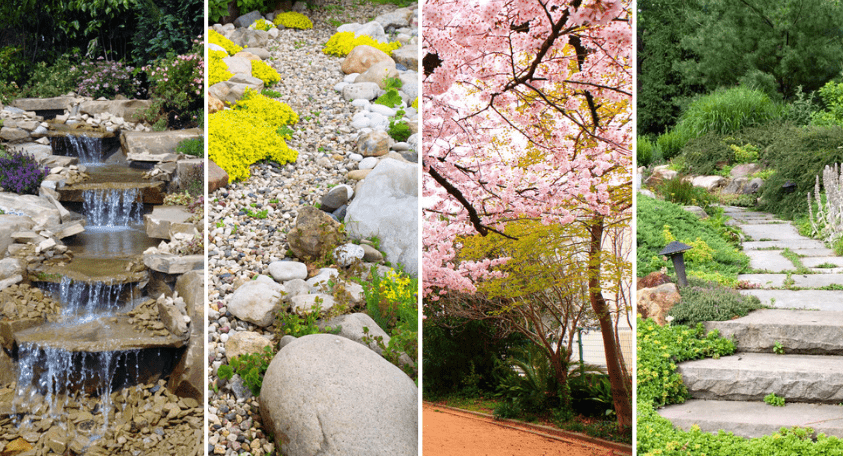
Plants: Seasonal changes and the ever-changing flow of nature chosen for their steadfastness and grace.
Paths: sinuous or straight, the way that leads the visitor through a contemplative journey, aiming to trigger the meditative state.
Following some of these traditional Japanese garden concepts will not only make your place beautiful but will also give you a zen-like space and, ultimately, peace of mind.
You can do this by adding a water feature, creating a tea house, or just using stones and plants to create that calming feel.
These ideas will help you to make your own beautiful Zen-like sanctuary.

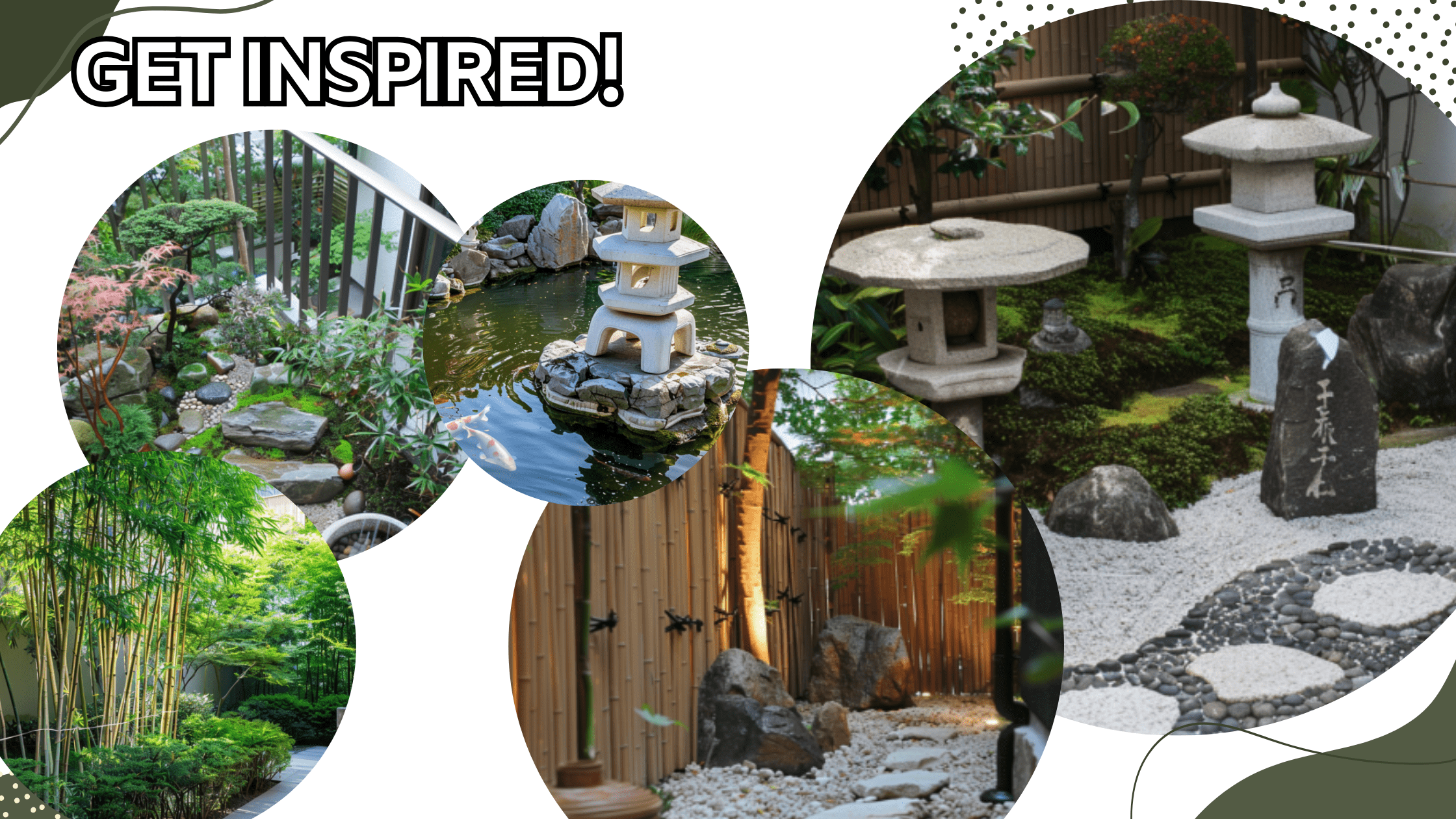
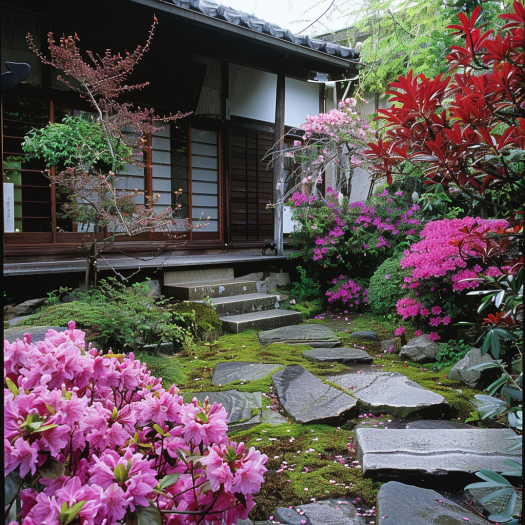
I have been truly immersing myself into Japanese inspired gardening over the past year. This post is chock full of information and especially inspiration that I would have had to gather from multiple other sources. Thank you for explaining, so thoroughly, the purpose behind the themes and elements found in Japanese inspired gardens, complete with stunning visual examples. Well done.
Thank you so much for your kind words! I’m thrilled to hear that you found the post both informative and inspiring.
I truly love Japanese gardens. In fact, the entire Japanese culture amazes me, and it’s enchanting to bring this culture into my home, especially for the “zen” atmosphere.
Thank you again for your words Katie, it’s a pleasure.
Thank you for all this valuable information. Despite our very challenging site, I have found your information relevant and encouraging. I look forward to implementing your knowledge on our steep rocky landscape overlooking the sea with all the harsh weather we can encounter from time to time. Thank you
I’m so happy to hear that you found the information useful! I hope it inspires you and helps you find creative solutions for your decorating projects. I’m sure everything you do will make your landscape beautiful!
So very helpful and inspiring. Resources to create are impossible where I live but some ideas could be achieved thank you so much for sharing your excellence with people.